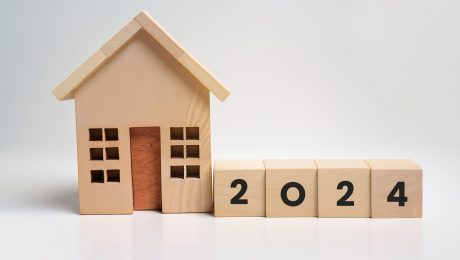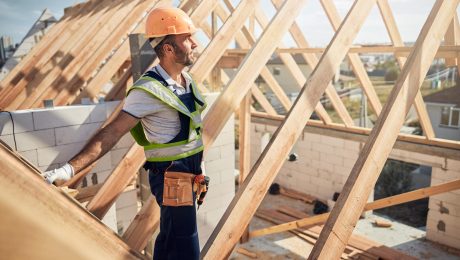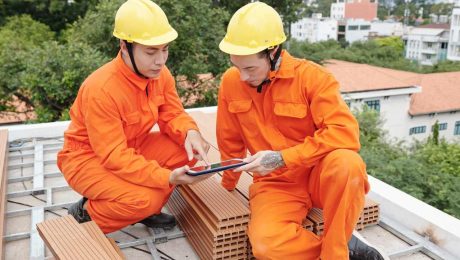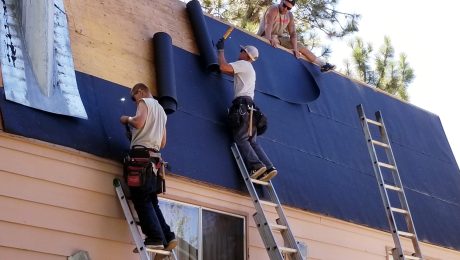Need a Roof Upgrade? These 5 Reasons Say Now’s the Time
Your roof is your home’s first shield against harsh weather be it wind, rain, scorching heat, or freezing cold. Yet despite its critical role, it’s often overlooked until visible damage demands attention. From mysterious ceiling stains to sky-high energy bills, the warning signs are easy to miss or ignore. But delaying a roof upgrade can lead to costly repairs, safety risks, and energy inefficiencies.
Upgrading your roof isn’t just about patching leaks, it’s a smart investment in your home’s safety, comfort, and long-term value. In this article, we’ll explore five clear signs that your roof needs replacing and why acting now could save you money, stress, and future headaches.
5 Key Signs You Need a Roof Upgrade
1. Visible Roof Damage (Leaks, Missing Shingles, or Cracks)
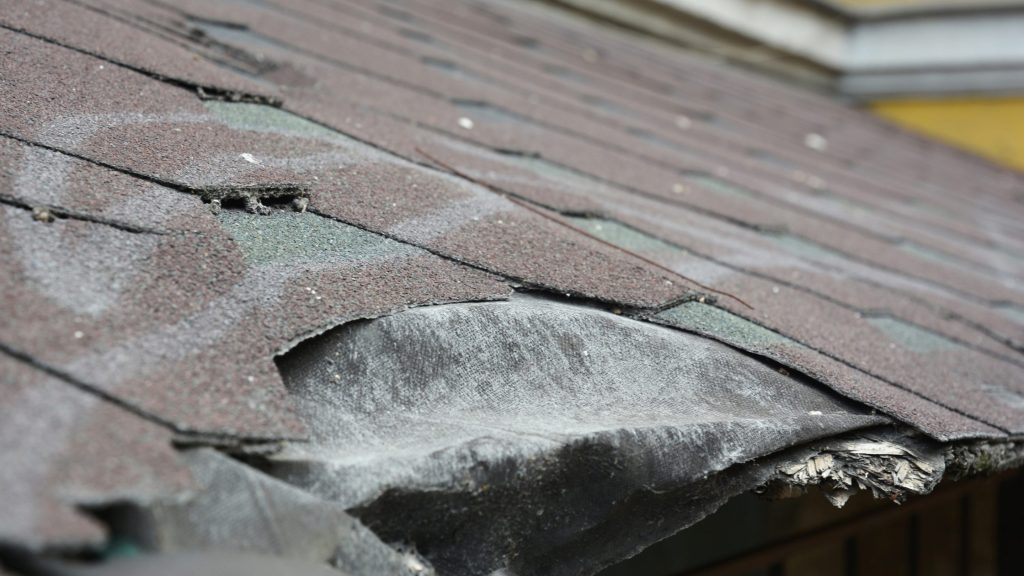
If your roof is missing shingles, showing dark streaks, or developing cracks, it’s waving a red flag. Even minor leaks can escalate into major structural issues, leading to costly repairs down the line. Water stains on ceilings, damp attic insulation, or sunlight peeking through the rafters often signal compromised flashing or deteriorated roofing materials. Another warning sign? Finding shingle granules in your gutters is a telltale sign that your roof’s protective surface is breaking down.
Pro Tip: Don’t dismiss curling shingles, cracked flashing, or a sagging roofline. These are signs of aging materials or hidden water damage that demand immediate action.
2. Rising Energy Bills Due to Poor Insulation
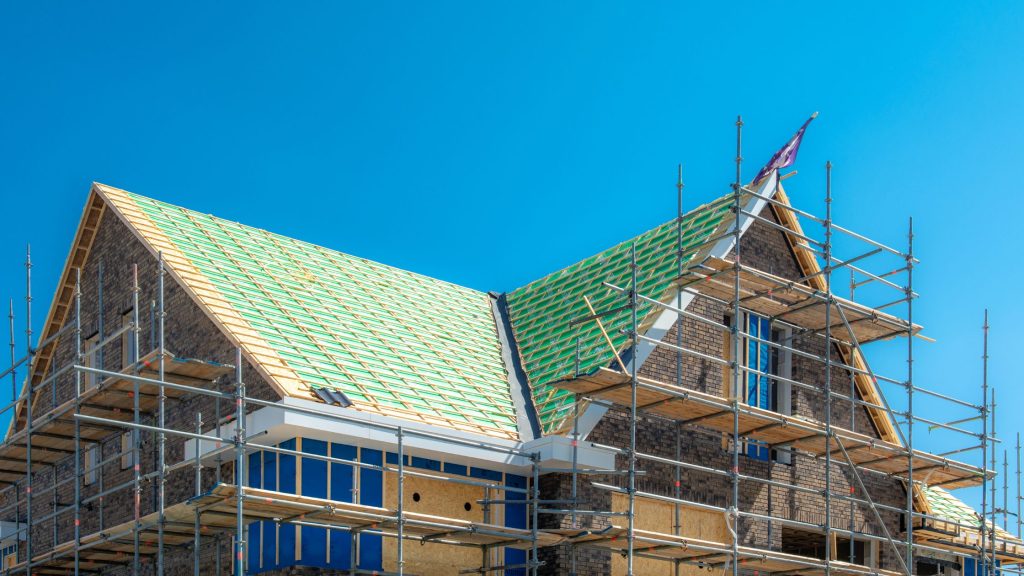
If your heating or cooling costs have suddenly increased, your roof might be to blame. Older or damaged roofs often lack proper insulation or ventilation, causing your HVAC system to work overtime. Modern roofing systems with energy-efficient materials like cool roof shingles or reflective metal panels help maintain consistent indoor temperatures and reduce utility bills year-round.
Bonus Benefit: Energy-efficient roofs not only save money but also enhance indoor comfort, especially during extreme weather.
3. Your Roof is Over 20 Years Old
How old is your roof?
- Asphalt shingles: 20-25 years
- Metal roofing: 40-70 years
- Clay or concrete tiles: 50+ years
Even if your older roof looks fine from the ground, time and weather slowly degrade its materials. Older roofs are also less likely to meet modern building codes and energy efficiency standards. If your roof is approaching or past its expected lifespan, it’s better to upgrade proactively than risk a sudden failure during a storm or heavy snowfall.
4. Frequent Repairs Are Adding Up

A leak here, a missing shingle there… if your roof feels like a constant maintenance project, it’s time to take a step back and look at the bigger picture. Regular roof repairs may seem cheaper in the short term, but those costs can quickly add up without solving the root of the problem. Frequent patchwork often indicates deeper issues like water damage, aging materials, or improper installation. And every repair usually comes with added expenses: inspection fees, emergency service charges, or interior damage from repeat leaks.
Why It Matters: Ongoing repairs don’t just hit your wallet they disrupt your life. Constant water intrusion can damage insulation, drywall, flooring, and even electrical systems, leading to further unexpected costs.
5. You’re Planning to Sell Your Home Soon

Thinking of putting your home on the market? Your roof could make or break the sale. Buyers notice the roof first, and a worn or damaged one can raise red flags, cause hesitation, or even reduce offers.
A new roof doesn’t just improve curb appeal it signals that the home is well-maintained, energy-efficient, and move-in ready. That reassurance can help your property stand out in a competitive market.
Did You Know? According to Remodeling Magazine’s Cost vs. Value Report, homeowners can recoup 60–70% of the cost of a roof replacement at resale. In some hot housing markets, a new roof can even drive bidding wars and quicker sales.
Additional Benefits of a New Roof Before Selling:
- Increases appraisal value
- Passes home inspections with ease
- Attracts FHA or VA loan buyers (who may require roof certification)
- Lowers the chances of buyer negotiations or credits at closing
Pro Tip: Pair your new roof with other exterior upgrades like fresh paint or new gutters to create a powerful first impression and maximize your home’s resale potential.
Benefits of Upgrading Your Roof Now
1. Enhanced Protection Against Extreme Weather

Today’s roofing materials are engineered for resilience in the face of increasingly unpredictable and severe weather. Whether you live in a region prone to hurricanes, hailstorms, or heavy snow, a modern roof provides superior protection.
- Impact-resistant shingles (Class 4 rated) can withstand hail and flying debris.
- Metal roofing systems offer exceptional wind resistance—some rated to handle gusts over 140 mph.
- Fire-rated materials (Class A) can slow the spread of flames and are especially beneficial in wildfire-prone areas.
- Advanced waterproofing technologies, such as synthetic underlayments and ice-and-water shields, help prevent interior water damage even during torrential rains.
Bottom line: A roof upgrade means you’re better prepared for the next big storm—and less likely to face costly emergency repairs.
2. Improved Energy Efficiency & Lower Utility Bills
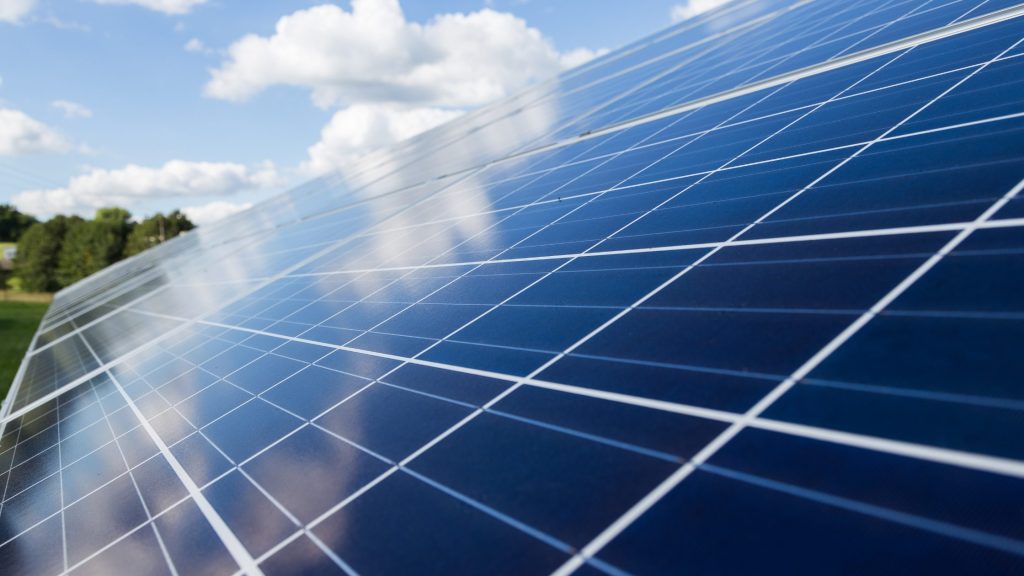
An outdated or poorly insulated roof is a silent energy drain, making your HVAC system work harder year-round. New roofing systems use energy-efficient technologies that regulate indoor temperatures more effectively.
- Cool roof coatings and reflective shingles can lower surface temperatures by up to 50°F, significantly cutting cooling costs in hot climates.
- Proper attic ventilation reduces heat buildup in summer and moisture accumulation in winter, both of which impact energy efficiency and roof health.
- Insulated underlayment and radiant barriers help retain warmth in colder seasons, reducing heating expenses.
Result: You’ll enjoy a more comfortable home and potentially save hundreds per year on energy bills.
3. Increased Home Value & Curb Appeal
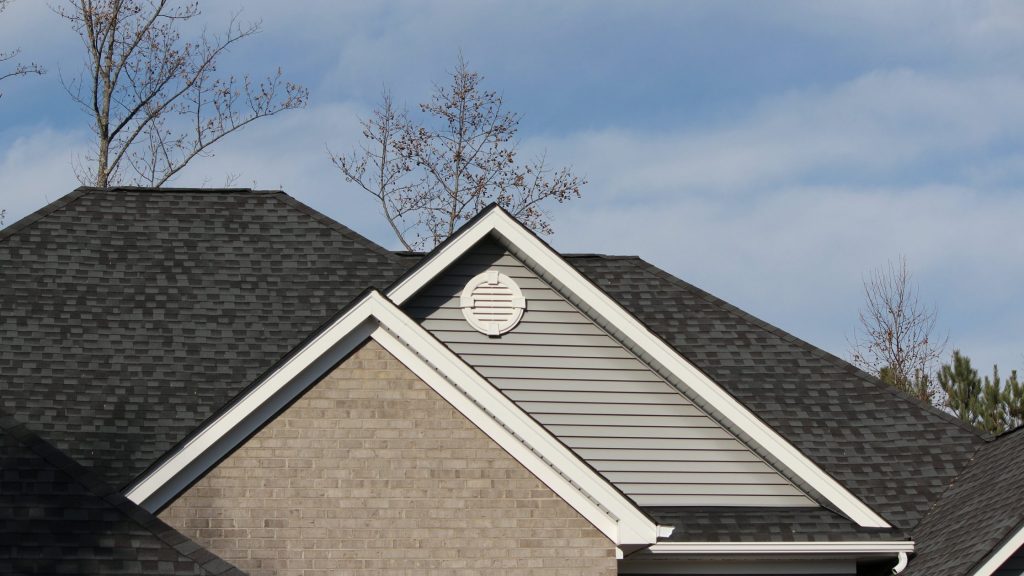
A roof upgrade is one of the most visible and valuable home improvements you can make.
- Modern roofing materials come in a variety of colors, profiles, and finishes that can complement or elevate your home’s architectural style.
- Enhanced curb appeal makes a strong first impression on potential buyers, neighbors, and appraisers.
- According to real estate experts, a new roof can boost resale value and attract more qualified buyers, especially in competitive markets.
Fast Fact: A new roof can increase your home’s appraised value by as much as 5–10% and help it sell faster, often with fewer negotiations.
4. Peace of Mind & Long-Term Savings

Beyond the visible improvements, a new roof delivers lasting security and savings.
- Manufacturer warranties typically range from 25 years to lifetime coverage, depending on the material and installer.
- Less frequent repairs and maintenance mean lower long-term ownership costs.
- You gain confidence during storms, knowing your home is well-protected against leaks, wind, and mold-causing moisture.
Added Bonus: Modern roofing systems are easier to inspect, maintain, and clean—saving you time and stress over the years.
How to Know If You Need a Roof Upgrade
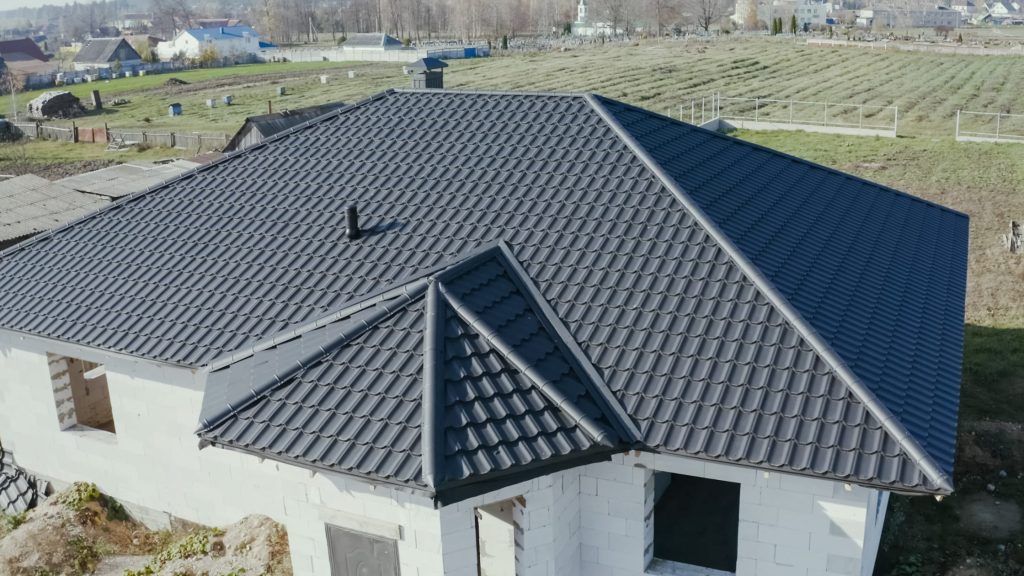
Not sure whether your roof needs replacing or just a few repairs? Start with a simple self-inspection to catch early warning signs before they become costly problems. Here’s what to look for:
DIY Roof Check: What to Look For
- Daylight in the Attic: Head into your attic during the day. If you see beams of sunlight peeking through the roof boards, it means there are gaps or holes that need attention.
- Sagging or Soft Spots: Walk around your roof (if safe to do so) and feel for areas that are sagging or spongy. This may indicate water damage or compromised structural support.
- Mold, Mildew, or Moss Growth: Watch for green or black growth along roof valleys or shady areas. These can trap moisture and accelerate the breakdown of roofing materials.
- Granules in the Gutters : Asphalt shingles shed granules as they age. If your gutters are filling up with these gritty particles, it’s a sign your shingles are wearing out and may no longer offer full protection.
Next Steps: When to Call a Professional
If you notice any of these red flags or simply haven’t had a roof inspection in over a year it’s time to bring in a licensed roofing contractor. Most reputable companies offer free or low-cost inspections, along with detailed estimates for repair or full replacement.
Pro Tip: Always ask for a written inspection report and compare at least two to three quotes before making a decision. A trusted professional can help you determine whether minor repairs will suffice or if a full roof upgrade is the smarter, long-term choice.
Conclusion
Upgrading your roof is more than just a home improvement; it’s a smart, long-term investment in your property’s safety, efficiency, and value. As highlighted throughout this article, there are clear signs you need a new roof, including visible damage, frequent repairs, rising energy bills, or simply the age of your current roof. Ignoring these issues can lead to more severe problems like structural damage, mold, or energy loss. On the other hand, the benefits of a roof upgrade are substantial.
A new roof offers enhanced protection against extreme weather, improved insulation, lower utility bills, and increased curb appeal especially important if you’re planning to sell your home. If you’re unsure how to know if you need a roof upgrade, start with a basic inspection and follow up with a professional assessment. Most reputable roofing contractors offer free or low-cost evaluations to help you make an informed decision. Don’t wait for costly damage to occur. Proactive roof replacement ensures peace of mind and adds long-term value to your home.
Ready to take the next step? Contact Best GC today for a free estimate and expert guidance on upgrading your roof with confidence.
Roof Replacement vs Roof Repair: How to Make the Right Choice
Overview: Choosing Between Roof Repair and Replacement for Long-Term Value and Protection
Deciding between roof replacement vs roof repair is a critical step in maintaining your home’s safety and value. Whether you’re facing storm damage, aging shingles, or frequent leaks, this guide will help you understand the pros, cons, and costs of each option so you can make an informed decision.
This comprehensive guide breaks down everything you need to know to make a smart choice for your home’s protection, energy efficiency, and resale value. From spotting warning signs to understanding costs and benefits, we’ll help you weigh your options confidently. Plus, you’ll get expert tips for roof inspections and maintenance all tailored to your unique situation.
Understanding the Difference: Roof Repair vs. Roof Replacement
When your roof shows signs of wear or damage, it’s essential to know whether a repair will suffice or a full replacement is necessary. Each option serves a different purpose and depends on the age, condition, and extent of the roofing issue.
What is Roof Repair?
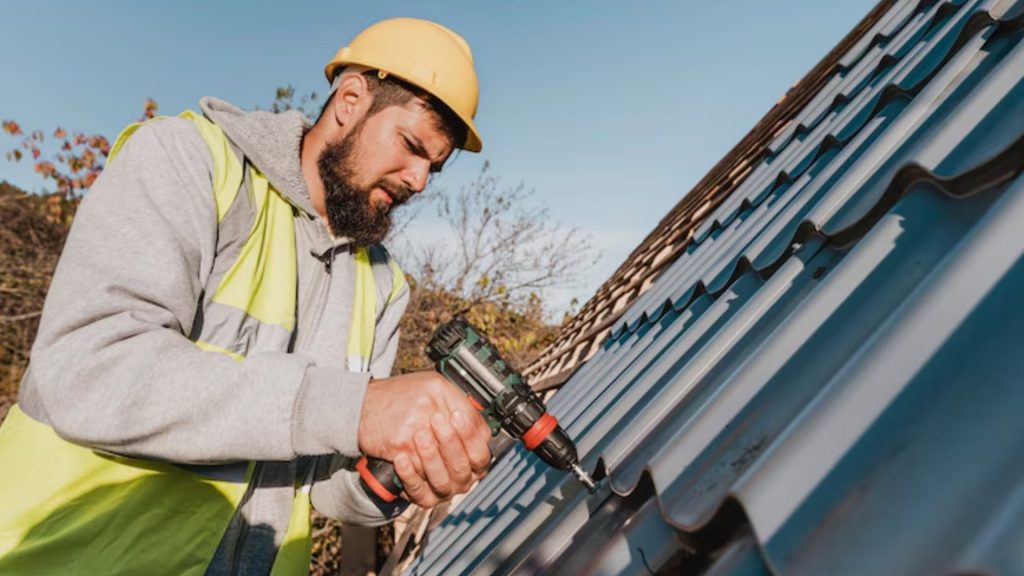
Roof repair refers to the process of addressing isolated problems on an otherwise functional roof. Common repair tasks include replacing damaged or missing shingles, sealing leaks, fixing flashing, and patching small areas impacted by weather or aging.
Benefits of Roof Repair:
- Cost-Effective: Repairs are generally more affordable than full replacements, making them a budget-friendly solution for minor issues.
- Quick Turnaround: Most repairs can be completed in a day or two, minimizing disruption to your home.
- Extends Roof Lifespan: Targeted repairs can help maximize the remaining years of an aging roof.
- Ideal for Localized Damage: If the problem is limited to one area like a small leak or storm damage a repair is often the most efficient option.
What is Roof Replacement?
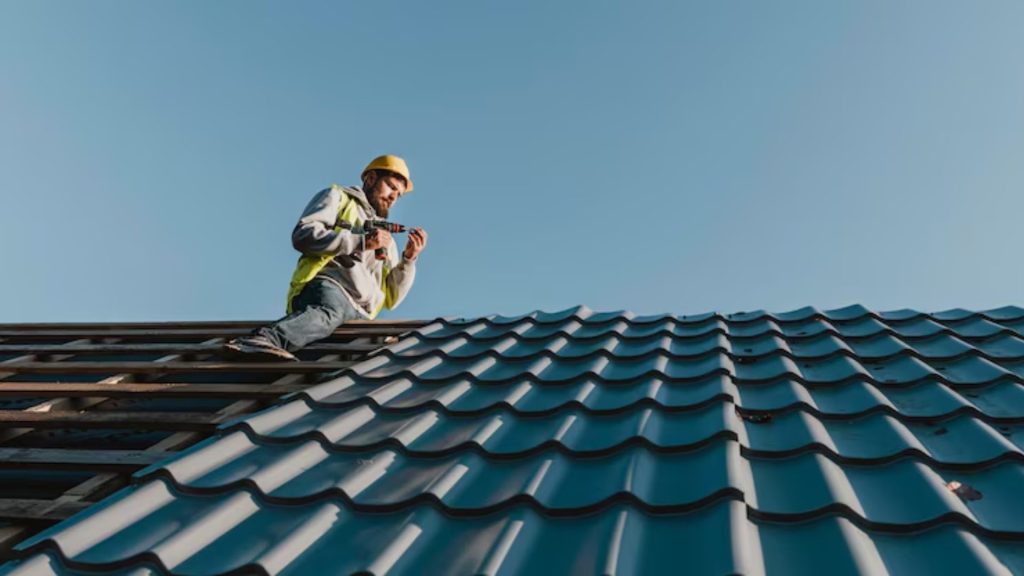
Roof replacement involves removing the existing roofing system down to the deck and installing new materials either due to age, widespread damage, or structural concerns. In some cases, re-roofing (laying new shingles over the old ones) may be an option, depending on local codes and the condition of the existing layers.
Scenarios That Require Roof Replacement:
- Extensive Water Damage or Mold: When leaks go unnoticed or are widespread, moisture can rot the underlying structure and cause mold growth, necessitating a full replacement.
- Roof Age: Most asphalt shingle roofs last around 20–30 years. If your roof is near or beyond its expected lifespan, replacement ensures long-term protection.
- Structural Issues: A sagging roof or compromised decking indicates foundational problems that repairs can’t fix.
- Multiple Repair Attempts: If you’ve had several repairs over the years and issues persist, replacing the entire roof might be more cost-effective in the long run.
- Storm or Hail Damage: Severe weather events can cause widespread shingle loss, granule erosion, or even deck damage, warranting full replacement.
How to Decide: Key Factors That Influence Your Choice
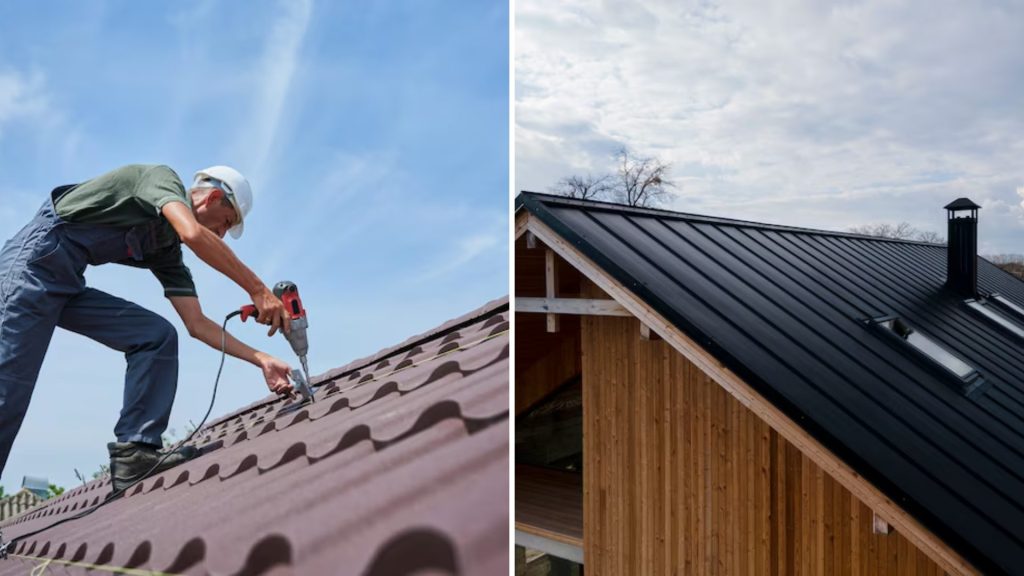
Deciding between a roof repair and a full roof replacement comes down to more than just patching up problems. Here are the key factors to consider when evaluating the best course of action for your home:
1. Age of the Roof
The age of your current roofing system is one of the most critical indicators. Asphalt shingle roofs typically last between 15 to 30 years, metal roofs can last anywhere from 40 to 70 years, and tile or slate roofs may even exceed 100 years with proper maintenance.
If your roof is nearing or has passed its expected lifespan, investing in another repair might only delay the inevitable. In such cases, replacement becomes more cost-effective and ensures long-term protection for your home.
2. Extent and Type of Damage
Not all roof damage is equal. Minor issues like a few missing shingles or small, localized leaks can usually be resolved with quick repairs. However, widespread damage, frequent leaks, water stains across ceilings, or signs of structural sagging suggest deeper problems that repairs can’t solve.
If your roof shows signs of mold growth, water infiltration across multiple areas, or noticeable drooping, it’s a red flag that a replacement is necessary to restore structural integrity and safety.
3. Roof Inspection Results
Hiring a licensed roofing contractor for a professional inspection provides crucial insight. A thorough inspection will evaluate the roof’s structural integrity, ventilation systems, insulation performance, and the presence of moisture or rot.
Based on the results, a contractor can recommend whether targeted repairs are sufficient or if a complete overhaul is needed. Always request a detailed written estimate for both repair and replacement options so you can compare short-term costs with long-term benefits.
4. Budget and Long-Term Home Goals
Your financial situation and future plans for the home will greatly influence your decision. If you’re looking for a budget-friendly, short-term fix especially if you plan to move soon repairs might make more sense. However, if you’re staying in your home for many more years, a roof replacement is a smart investment. It not only reduces ongoing maintenance but can also boost your home’s value, improve curb appeal, and offer stronger protection against future weather events. Think of repairs as a band-aid and replacement as long-term healthcare for your home.
5. Energy Efficiency and Structural Soundness
Old or compromised roofs often contribute to insulation problems, leading to increased energy bills, uneven indoor temperatures, and a less comfortable home environment. Leaks or poor ventilation can also encourage mold and mildew, posing health risks.
A new roof offers modern materials and improved insulation that can significantly increase energy efficiency. It helps your home stay cooler in the summer and warmer in the winter, reduces the strain on your HVAC system, and restores the overall structural stability of your home.
Cost Comparison: Roof Repair vs. Roof Replacement
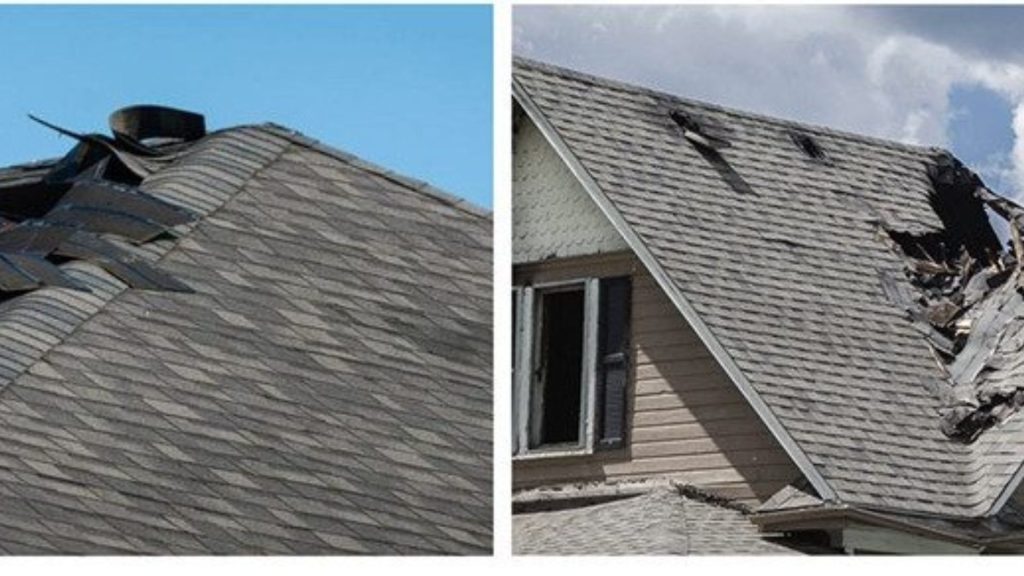
Understanding the cost difference between repairing a roof and replacing it entirely is essential for planning your budget and making the right decision for your home.
National Averages in the U.S.
- Roof Repair: Typically $150 to $1,500 depending on damage severity. Minor shingle replacements or leak patches cost less, while larger repairs involving flashing or decking may cost more.
- Roof Replacement: Usually ranges from $6,000 to $25,000+, depending on home size, roof complexity, and materials (asphalt, metal, tile, etc.).
Key Factors That Influence Roofing Costs
Several elements can affect the total cost of either a repair or a replacement:
- Roof Size and Pitch: Larger roofs or those with steep slopes are more labor-intensive and expensive to work on.
- Material Selection: Asphalt shingles are usually the most budget-friendly, while metal, slate, tile, and wood shakes come with higher material and labor costs.
- Geographic Location: Labor and material prices vary across regions. For example, roofing costs in coastal or urban areas tend to be higher than in rural areas.
- Labor Costs: Hiring experienced, licensed roofing contractors may cost more upfront but ensures better workmanship and fewer issues down the line.
- Permit and Disposal Fees: Depending on local building codes, you may need permits for roof replacement. Also, old material disposal and cleanup can add to the overall bill.
What About Insurance?
In many cases, homeowners insurance may cover all or part of your roofing costs, but only under certain conditions. Most policies provide coverage if the damage is caused by sudden, unavoidable events—such as hailstorms, high winds, fallen trees, or fire. However, general wear and tear or neglect usually aren’t covered.
To increase your chances of receiving coverage:
- Document the damage with photos.
- Schedule a professional roof inspection as soon as possible.
- Contact your insurance provider promptly and file a claim if applicable.
Pro Tip: Even if you’re not sure the damage qualifies, it’s worth having an expert assess your roof and assist with the claims process.
Pros and Cons: Roof Repair vs. Roof Replacement
Making the right decision starts with understanding the benefits and drawbacks of each option. Here’s a detailed breakdown:
Roof Repair
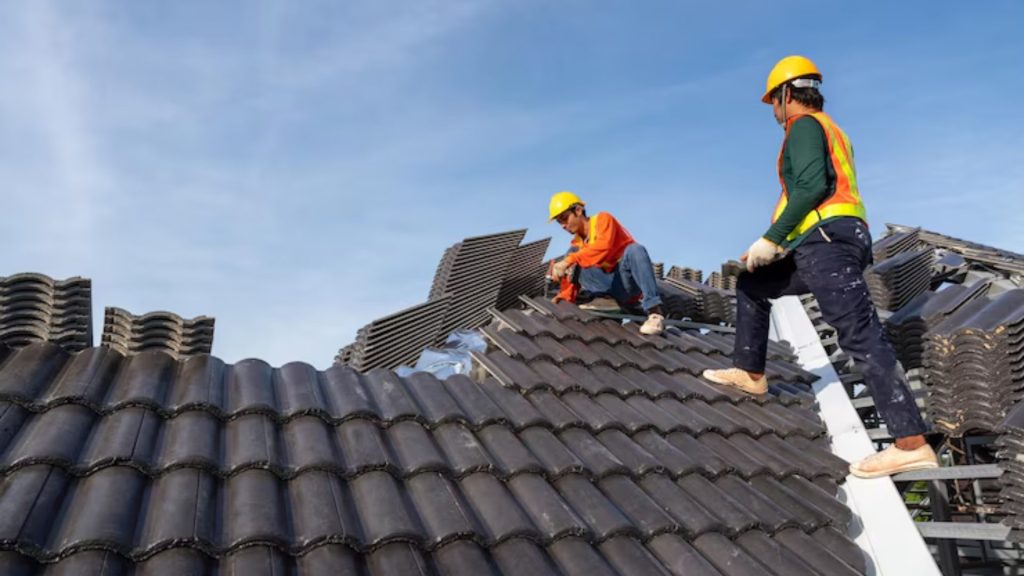
Roof repair is a practical and cost-effective solution when dealing with minor or isolated roofing issues. It allows you to fix specific problems quickly without the expense or disruption of replacing the entire roof. However, repairs are generally temporary and best suited for roofs that are still relatively new or in good overall condition.
Pros of Roof Repair:
- Lower Upfront Cost: Much more affordable than a full replacement, making it a great option for minor issues or tight budgets.
- Faster Completion: Most repairs can be completed in 1–2 days with minimal disruption.
- Extends Roof Life: Helps prolong the lifespan of a relatively new or mid-life roof.
- Targeted Fix: Ideal for addressing isolated problems such as missing shingles or small leaks.
Cons of Roof Repair:
- Temporary Solution: Repairs only offer a short-term fix, especially on aging roofs.
- Recurring Costs: Multiple repairs over time can add up and may end up costing more than a replacement.
- Limited Structural Impact: Doesn’t address hidden structural issues or underlying damage.
- Minimal Efficiency Gains: Little to no improvement in insulation or energy efficiency.
Roof Replacement
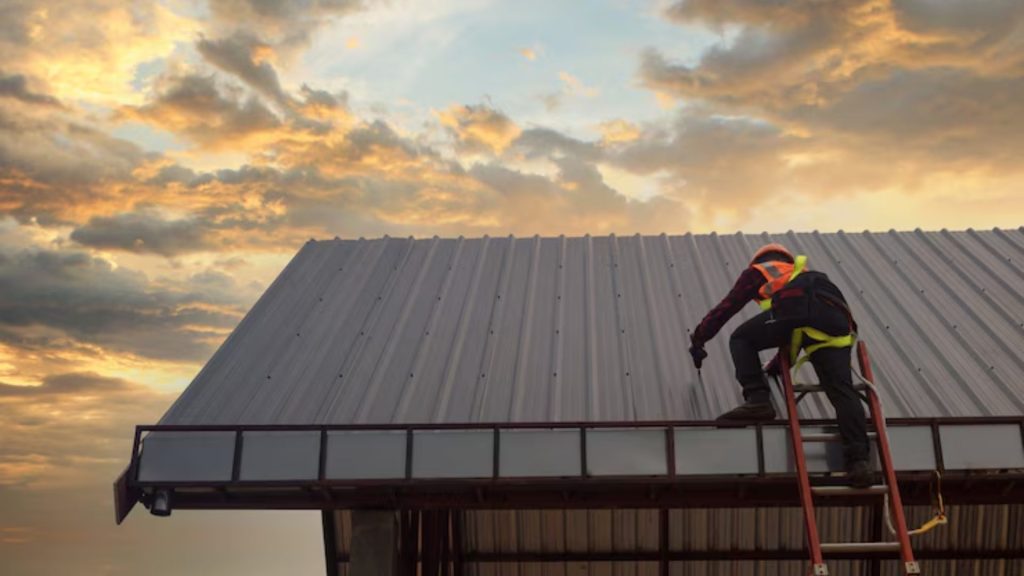
Roof replacement is a more significant investment that offers long-term benefits. It involves removing the old roof and installing a new one, which strengthens your home’s structural integrity, boosts energy efficiency, and increases property value. While the upfront cost and time commitment are higher, a new roof provides peace of mind and protection for decades to come.
Pros of Roof Replacement:
- Long-Term Investment: Provides 20–30+ years of durability and peace of mind.
- Structural Renewal: Allows full inspection and reinforcement of the entire roofing system.
- Boosts Energy Efficiency: Modern materials and insulation can significantly reduce energy bills.
- Increases Home Value: Enhances curb appeal and resale value, making it a smart investment for long-term homeowners.
- Warranty Benefits: New roofs often come with manufacturer and workmanship warranties.
Cons of Roof Replacement:
- Higher Initial Cost: Significantly more expensive than a repair, which may not be ideal for all budgets.
- Longer Project Timeline: Can take several days to a week to complete, depending on size and complexity.
- Permit and Disposal Fees: May require permits and involve costs for removing and discarding old materials.
- Weather Dependency: Scheduling and completion can be affected by bad weather conditions.
Conclusion: Your Roof, Your Investment Make the Right Call
When it comes to roof replacement vs. roof repair, there’s no one-size-fits-all answer. The right choice depends on the age of your roof, the extent of the damage, your budget, and your long-term homeownership goals.
Minor leaks or missing shingles? A repair might be all you need. But if your roof is nearing the end of its lifespan or showing widespread wear, investing in a full replacement could save you money and stress down the road.
The key takeaway? Don’t get a professional roof inspection. It’s the smartest step toward protecting your home’s value, energy efficiency, and structural safety.
Ready to take the next step? Schedule a free roof inspection or estimate today and get expert guidance tailored to your specific situation.
Flat Roof vs Sloped Roof: Which Is Right for Your Home?
Choosing between a flat roof vs. sloped roof is an important decision for any homeowner planning a renovation or new build. Each style has its own advantages, from energy efficiency to maintenance costs. Both options come with their own set of advantages and drawbacks, making it important to choose the one that best aligns with your home’s style, budget, and location. Understanding the differences between flat and sloped roofs is crucial to making an informed decision that will impact not only your home’s aesthetics but also its durability, energy efficiency, and long-term maintenance.
In this article, we’ll dive into the specifics of both roof types, breaking down their pros and cons, and providing expert advice to help you determine which roof type is right for your home. Whether you’re building a modern minimalist home or renovating a traditional property, we’ll guide you through the decision-making process with clear insights, real-world examples, and actionable tips.
Understanding the Basics: What Are Flat and Sloped Roofs?
What is a Flat Roof?
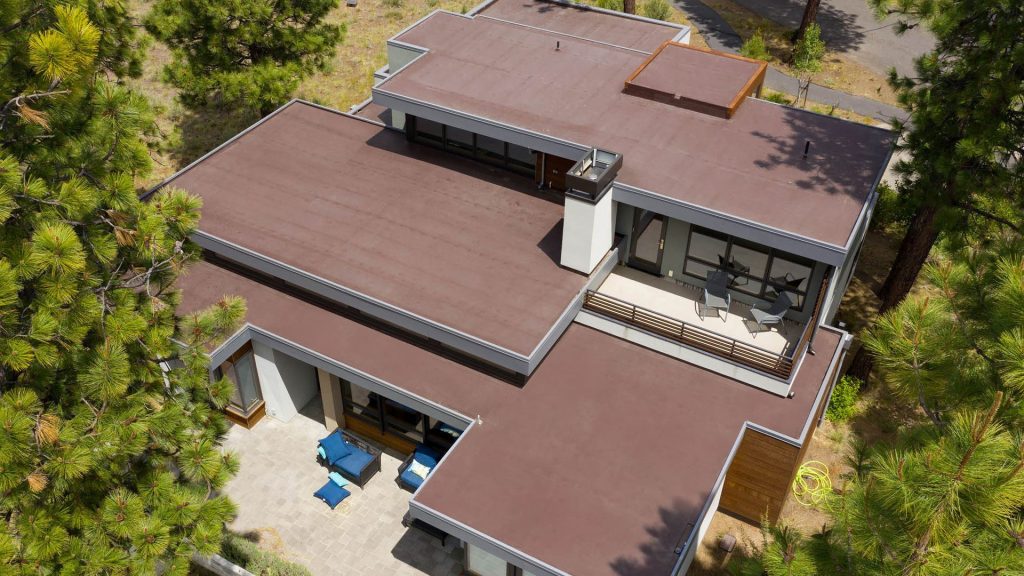
Flat roofs are characterized by their minimal slope, typically less than 10 degrees, which allows for a level surface. These roofs are commonly found in modern architecture, especially in urban or contemporary homes. Materials such as EPDM, TPO, and modified bitumen are typically used for flat roofs due to their durability and ease of installation.
The primary advantage of flat roofs is the additional usable space they provide. Homeowners can install solar panels, create rooftop gardens, or build terraces on flat roofs, making them a practical choice for homes with limited yard space. However, one challenge with flat roofs is drainage. Without proper design and maintenance, flat roofs can accumulate water, leading to leaks or structural issues over time.
What is a Sloped Roof?

Sloped roofs, also known as pitched roofs, are designed with an angle to allow rainwater and snow to easily slide off. This type of roof is common in traditional and suburban homes. Sloped roofs come in various styles, including gable, hip, gambrel, and shed, each offering its own aesthetic and functional benefits.
The key advantage of sloped roofs is their ability to manage water and snow runoff effectively. This reduces the risk of water pooling, which can cause leaks and other issues. Sloped roofs also provide additional space for attic insulation, contributing to better energy efficiency.
Types of Sloped Roof
Sloped roofs come in a wide variety of styles and materials, each offering different benefits in terms of aesthetics, durability, and weather resistance. To help you understand your options, let’s break them down into two main categories: based on material and based on pattern.
1. Sloped Roofs Based on Material
The material you choose for a sloped roof affects not only its look but also its performance, lifespan, and maintenance needs. Below are some of the most common roofing materials used for sloped roofs:
- Asphalt Shingles – The most widely used roofing in the U.S. Affordable, easy to install, and available in many colors and styles. They typically last 15–30 years and are ideal for most climates, though less durable than premium materials.
- Clay or Concrete Tiles – Common on Mediterranean and Spanish-style homes. These tiles are long-lasting, fire-resistant, and insulate well. However, they are heavy and may require additional roof support. Installation is more expensive.
- Metal Roofing – Gaining popularity for both traditional and modern homes. Metal roofs last 40–70 years, are lightweight, and shed rain and snow efficiently. While they cost more upfront, they lower energy bills by reflecting heat.
- Wood Shingles or Shakes
Offer a warm, rustic look, especially on cottages or historic homes. They’re eco-friendly and insulating but need regular maintenance to protect against moisture, insects, and fire. Lifespan is around 20–40 years. - Slate Roofing – One of the most durable and elegant materials. Slate can last over 100 years, is fireproof, and handles extreme weather. It’s also very heavy and expensive, requiring a strong structure and expert installation.
- Composite or Synthetic Shingles – Made to resemble slate, wood, or tile but are lighter and lower maintenance. They’re durable and weather-resistant, though quality varies. High-end versions can be as costly as natural materials.
2. Sloped Roofs Based on Pattern (Design/Shape)
The pattern or shape of a sloped roof impacts how it sheds water, resists wind, and fits into the architectural style of your home. Here are the most common sloped roof designs:
- Gable Roof – A classic triangular shape with two sloping sides. Simple, cost-effective, and great for shedding water and snow. Common in traditional American homes.
- Hip Roof – All four sides slope downward, making it more stable and wind-resistant than gable roofs. Ideal for areas prone to storms or hurricanes.
- Gambrel Roof – A barn-style roof with two slopes per side—the lower being steeper. Adds extra attic or living space and is often seen on Colonial and Dutch-style homes.
- Mansard Roof – A French-inspired design with four sides and a steep lower slope. Maximizes interior space for top floors or attic conversions.
- Shed Roof (Skillion) – A single sloped surface, usually found on modern homes or additions. Easy to build and ideal for installing skylights or solar panels.
- Butterfly Roof – Two roof planes that slope inward, forming a V shape. Offers a unique, modern look and allows for rainwater harvesting and tall windows.
- Combination Roof – Blends styles like gable, hip, or shed roofs to suit custom home layouts. Useful for large homes needing both function and architectural flair.
Pros and Cons of Flat Roofs vs. Sloped Roofs

Flat Roof Pros
- Cost-Effective Installation: Flat roofs are more affordable to install than sloped roofs due to fewer materials and simpler construction. Ideal for budget-conscious homeowners.
- Usable Space: Provides extra space for solar panels, rooftop gardens, or outdoor lounges—especially valuable in urban settings where space is limited.
- Easier Maintenance Access: The flat surface allows for safe and easy access for inspections, cleaning, or minor repairs without needing special equipment.
Flat Roof Cons
- Shorter Lifespan in Harsh Weather: Prone to damage from standing water, UV rays, and snow accumulation if not maintained properly.
- Higher Maintenance Demands: Needs regular cleaning to prevent clogged drains and water pooling, which can lead to leaks or mold.
- Drainage Challenges: Flat roofs require a reliable drainage system—if it’s blocked or poorly designed, water damage can occur quickly.
Sloped Roof Pros
- Superior Drainage & Weather Resistance: Water and snow slide off easily, reducing risk of leaks, structural damage, and ice dams—great for wet or snowy climates.
- Longer Lifespan: Durable and weather-resistant materials like shingles or metal can last decades with minimal repairs.
- Classic Curb Appeal: Traditional sloped roofs enhance a home’s look and are often more appealing to buyers, increasing resale value.
Sloped Roof Cons
- Higher Upfront Costs: More expensive due to complex framing and premium materials; may not suit tight renovation budgets.
- Difficult to Access: Steep angles make inspections and repairs riskier and more expensive, typically requiring professionals.
- Not Ideal for Modern Design: Sloped roofs can clash with minimalist or modern home styles that favor sleek, flat lines.
Key Factors to Consider When Choosing a Roof Type
1. Climate and Weather Conditions
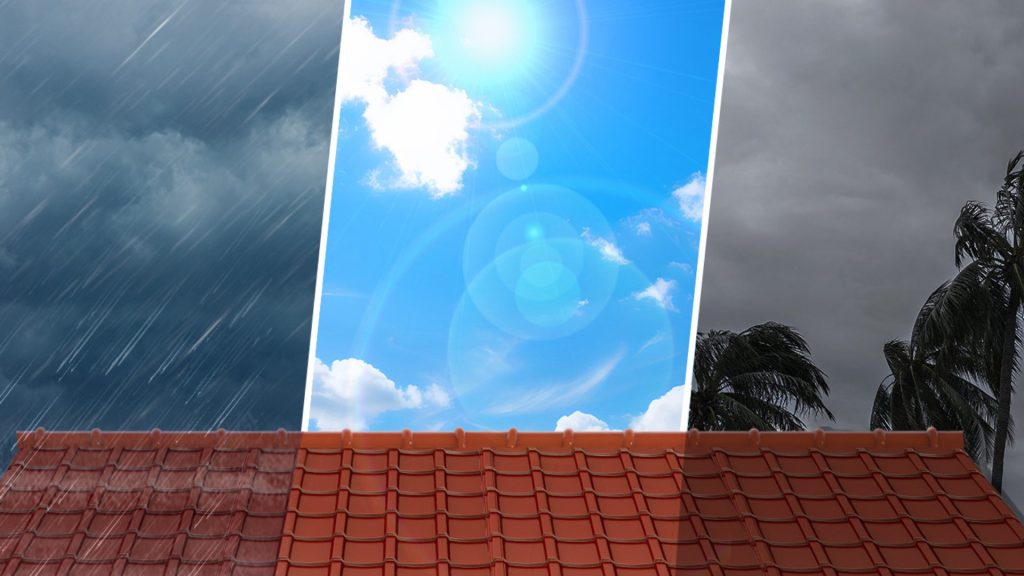
When choosing between a flat or sloped roof, one of the most important considerations is your local climate. For homes in areas with heavy rain, snow, or frequent storms, sloped roofs are generally the better option. The natural angle of a sloped roof allows for better water and snow runoff, which helps prevent pooling, leaks, and ice dams.
On the other hand, flat roofs work well in dry climates with little rainfall, such as the southwestern United States. In these regions, the lack of precipitation reduces the need for drainage, making a flat roof a more cost-effective option.
2. Aesthetic and Architectural Style
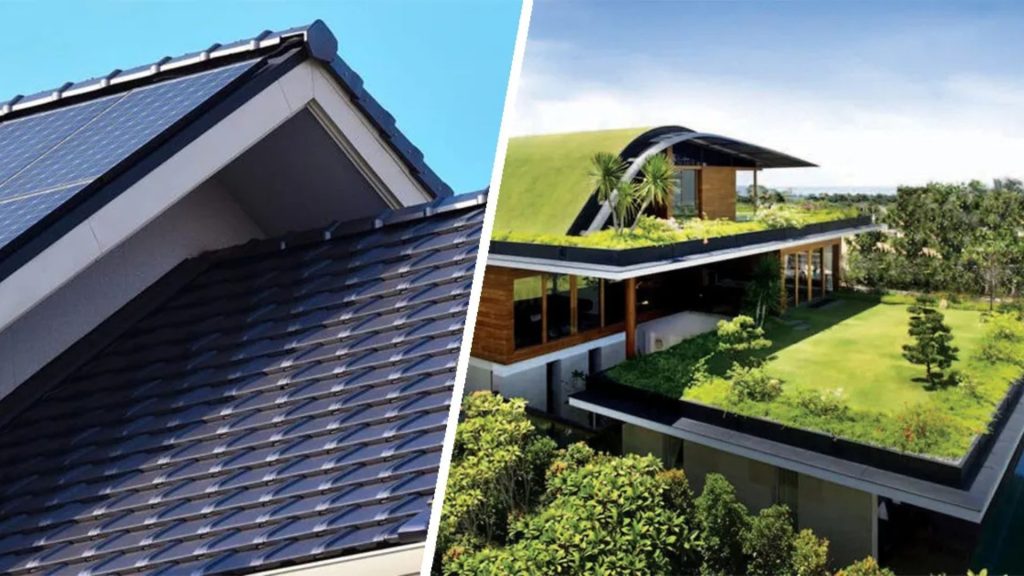
The style of your home plays a significant role in your roofing decision. Flat roofs are often associated with modern or contemporary homes, providing a sleek, minimalist look. These roofs are ideal for urban settings where space is limited and rooftop access is desired.
Sloped roofs, in contrast, are more traditional and are commonly found in suburban or rural settings. Their classic design and various style options (e.g., gable, hip) make them a versatile choice for many different architectural styles.
3. Budget and Long-Term Investment

Flat roofs typically have a lower initial installation cost compared to sloped roofs, making them a more budget-friendly option for homeowners. However, they may require more frequent maintenance and repairs, which can add up over time.
Sloped roofs, while more expensive upfront, tend to have lower long-term maintenance costs due to their durability and resistance to water damage. Additionally, sloped roofs can add more value to your home, which could make them a better long-term investment.
4. Energy Efficiency and Insulation
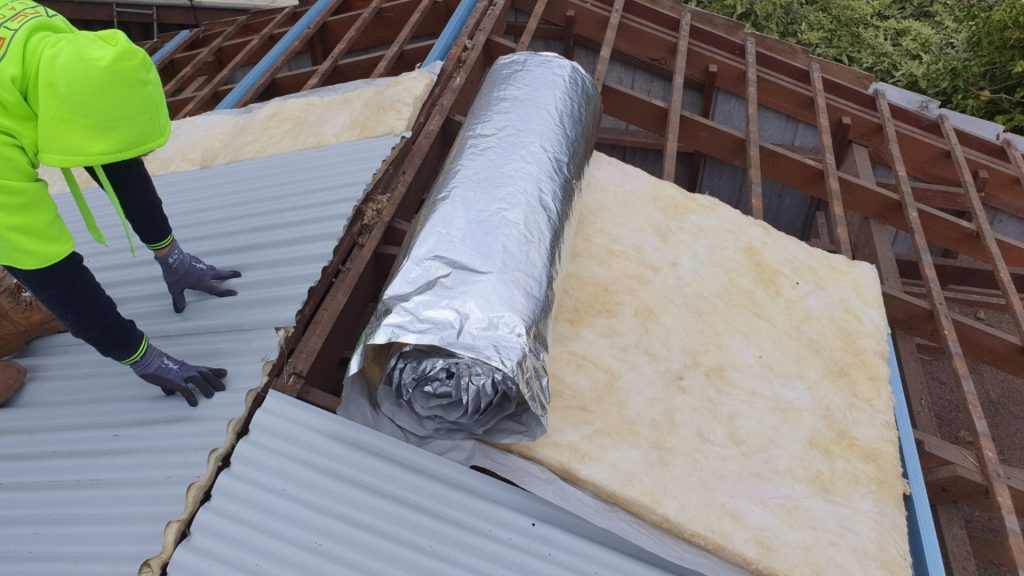
Sloped roofs provide more opportunities for insulation, particularly in the attic, which can improve energy efficiency. This is especially important in colder climates, where proper insulation can help keep your home warm during the winter months.
Flat roofs, on the other hand, can be equipped with reflective coatings or solar panels to enhance energy efficiency. In warmer climates, these options help reduce cooling costs by reflecting sunlight away from the home.
Roof Maintenance Tips for Both Roof Types

Regular roof maintenance is essential to ensure that your roof lasts for its full lifespan and protects your home effectively. Whether you have a flat roof or a sloped roof, each type requires its own approach to maintenance. Below are detailed maintenance tips to help you keep your roof in optimal condition:
Flat Roof Maintenance Tips
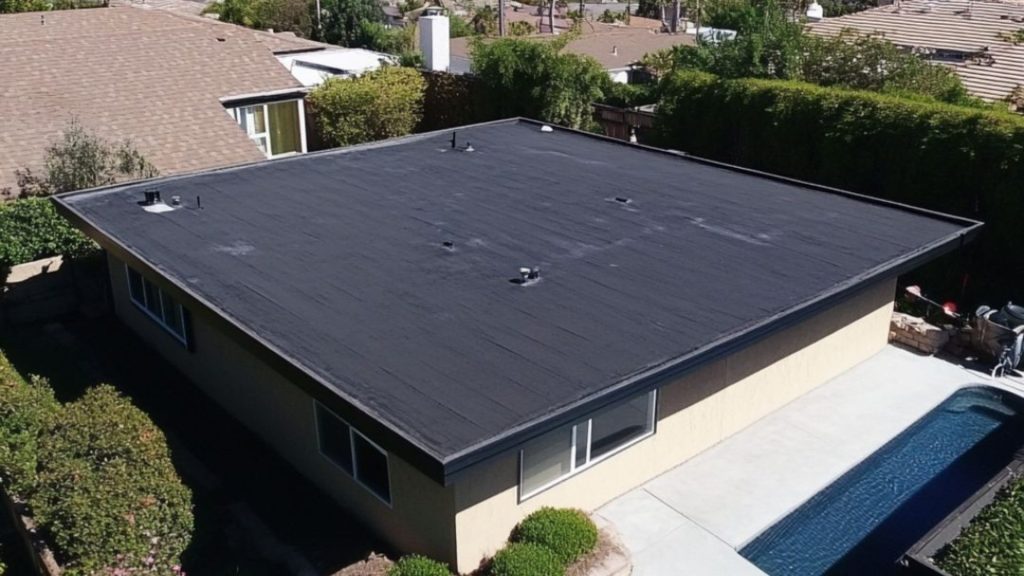
Flat roofs require consistent care to prevent issues like water pooling, leaks, and structural damage. Here’s a comprehensive guide to maintaining a flat roof:
1. Regular Inspections
Flat roofs are more vulnerable to damage than sloped roofs because of their minimal slope. Regular inspections, ideally twice a year (spring and fall), will help you spot problems before they become costly repairs.
What to Look For:
- Cracks: Small cracks in roofing materials can expand over time, leading to leaks.
- Ponding Water: Water should drain quickly from the roof. Ponding water can weaken the roofing materials and cause long-term damage.
- Blistering or Bubbles: These can form on the surface of the roof due to trapped moisture or air, leading to leaks.
Action Tip: Schedule professional inspections every few years to catch issues you may miss on your own.
2. Clear Debris Regularly
Flat roofs tend to accumulate leaves, branches, dirt, and other debris more easily than sloped roofs. If left unchecked, this debris can clog drains and scuppers, causing water buildup.
Action Tip:
- Clean Roof Surface: After heavy winds or storms, clear the roof of debris to prevent water from accumulating in low spots.
- Check Drains & Scuppers: Ensure that drains and scuppers are free from obstructions, especially after storms.
Why This Matters: Clogged drains lead to water pooling, which can weaken the roof membrane and cause leaks. Clean drains regularly to avoid costly water damage.
3. Check for Ponding
Ponding, or standing water, is one of the most common issues with flat roofs. It happens when water doesn’t drain properly and collects in depressions on the roof. This stagnant water can cause the roof material to degrade over time.
Action Tip:
- Install a Drainage System: If you notice ponding regularly, consider installing additional drainage channels or modifying the roof slope to improve water flow.
- Check After Rain: Inspect the roof immediately after heavy rain to ensure the water drains properly and doesn’t stay pooled in areas.
Why This Matters: Left unchecked, ponding water can cause the roof to warp, crack, and leak. Preventing ponding can significantly extend your roof’s lifespan.
4. Inspect for Signs of Wear or Damage on Roofing Membrane
Flat roofs usually have a single-layer membrane made of materials like EPDM, TPO, or modified bitumen. Over time, these materials can wear down due to UV exposure, foot traffic, or harsh weather conditions.
Action Tip:
- Look for Tears and Blisters: These issues can develop from heat exposure or physical damage.
- Check Seams and Edges: Inspect the seams where the membrane joins other parts of the roof. These are areas prone to leaks.
Why This Matters: Roof membranes protect against leaks and moisture infiltration. Addressing wear early can prevent costly repairs later.
Sloped Roof Maintenance Tips
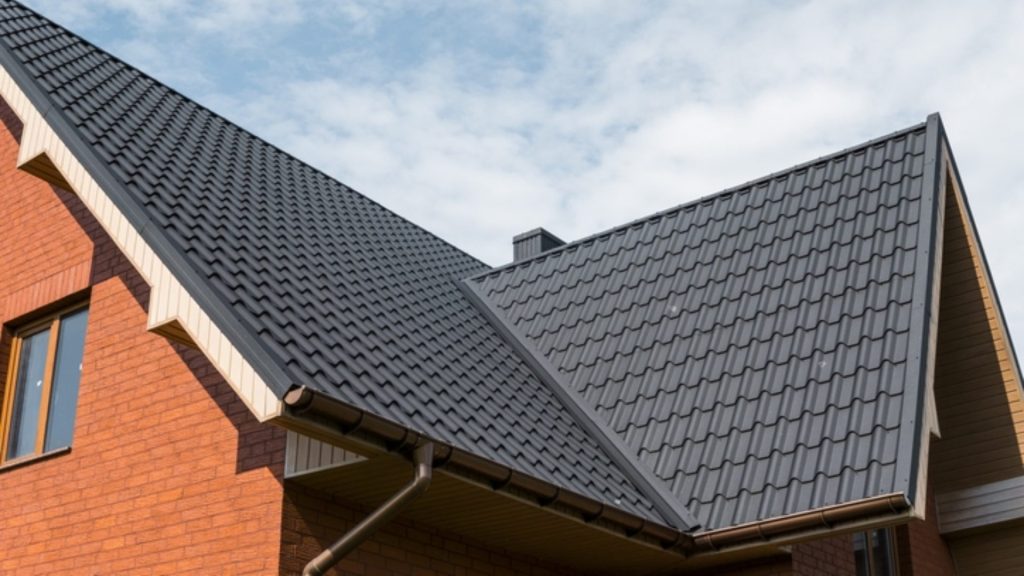
Sloped roofs are generally more resilient against the elements, but they still require regular maintenance to ensure their durability and effectiveness. Here’s how to care for a sloped roof:
1. Shingle or Tile Inspections
Over time, shingles or tiles on sloped roofs can become cracked, missing, or damaged due to weather conditions like hail, heavy winds, or aging. It’s important to inspect these components regularly.
What to Look For:
- Missing or Cracked Shingles/Tiles: If any are missing or cracked, water can infiltrate and damage your roof structure.
- Curling or Lifting Shingles: This often indicates that the shingles have reached the end of their lifespan or that there’s an underlying issue with your roof’s ventilation.
Action Tip:
- Replace Damaged Shingles: Replace cracked or missing shingles immediately to prevent leaks.
- Look for Granule Loss: If shingles are losing granules, it may be a sign of age, and replacement may be needed soon.
Why This Matters: Damaged shingles or tiles compromise your roof’s ability to protect your home from water infiltration and weather damage. Timely replacement helps prevent leaks and major repairs.
2. Gutter Cleaning
Gutters play an essential role in directing water away from your home, but they can quickly become clogged with leaves, twigs, and other debris. Clogged gutters can lead to water pooling on your roof or seeping into your home’s foundation.
Action Tip:
- Clean Gutters Quarterly: Clean your gutters at least four times a year, especially in fall after the leaves have fallen.
- Ensure Proper Downspout Flow: Ensure downspouts are clear and direct water at least 3 to 5 feet away from your home’s foundation.
Why This Matters: Keeping gutters clean ensures that rainwater is properly diverted away from your roof and home, preventing damage to the roof, siding, and foundation. Clogged gutters can lead to roof leaks, ice dams, or structural damage.
3. Flashing Check
Flashing is a critical component in sealing joints, vents, skylights, chimneys, and valleys where different roof planes meet. Over time, flashing can corrode, crack, or loosen, allowing water to seep through.
Action Tip:
- Inspect Flashing Regularly: Look for rust, cracks, or lifting edges around chimneys, vents, and skylights.
- Re-seal Flashing: If you notice any gaps or loose flashing, reseal them with roofing sealant or call a professional roofer to replace the flashing.
Why This Matters: Flashing is essential for preventing water infiltration around penetrations in your roof. Proper maintenance of flashing helps protect vulnerable areas from leaks and water damage.
4. Clean and Check for Moss or Algae Growth
In damp or shaded areas, moss and algae can grow on your roof’s surface, leading to premature aging of the roofing material.
Action Tip:
- Wash the Roof: Use a low-pressure power washer to remove moss or algae buildup, or apply a cleaning solution designed for roofing materials.
- Trim Overhanging Trees: If your roof is shaded by trees, trim branches regularly to reduce the amount of debris and moisture on the roof.
Why This Matters: Moss and algae retain moisture, which can cause your roofing materials to deteriorate faster. Removing them helps extend the life of your roof.
Which Roof Type Works Best for Your Home?
- Modern Homes in Urban Areas: Flat roofs are increasingly popular for their space efficiency and minimalist aesthetic. They’re perfect for green roofs, solar energy systems, or elevated outdoor living.
- Suburban or Family Homes: Sloped roofs remain the preferred choice due to their longevity, insulation potential, and timeless appearance.
Conclusion
Maintaining your roof is an ongoing task, but with regular inspections and a proactive approach to repairs, you can extend the life of your flat or sloped roof and prevent costly damages. Whether you have a flat roof that requires attention to drainage and membrane condition or a sloped roof that needs periodic shingle inspections and gutter cleaning, staying on top of maintenance will ensure your home remains protected and secure for years to come.
If you’re unsure about performing any of these tasks yourself, it’s always a good idea to consult with a professional roofer. Regular maintenance will not only improve your roof’s performance but also increase the long-term value of your home.
For a more personalized recommendation, we encourage you to contact Best Enterprises General Contracting for a free consultation. Our expert team can help you determine the best roofing solution for your home based on your specific needs and preferences.
Choosing the Right Roofing Material for Your Climate
Selecting the ideal roofing material isn’t just about enhancing the aesthetic appeal of your home; it’s about ensuring maximum protection and energy efficiency tailored to your climate. From enduring scorching heat to braving icy chills and tropical downpours, your roof is your first defense against the elements. In this comprehensive guide, we’ll delve into the intricacies of climate-smart roofing and how to make the best choice for your home’s comfort and longevity.
Understanding Climate Considerations
Before diving into specific roofing materials, it’s essential to grasp how climate nuances impact their performance. Each climate presents unique roof challenges, from deserts’ blistering heat to polar regions’ icy chills. Here’s a breakdown of considerations for different climates:
- Hot Climates: Roofing materials in hot climates endure prolonged sun exposure and high temperatures. They must effectively reflect sunlight, dissipate heat, and resist UV radiation to prevent premature deterioration.
- Cold Climates: Harsh winters bring freezing temperatures, heavy snowfall, and freeze-thaw cycles that can cause damage. Roofing materials need to be resilient to frost, able to shed snow efficiently and prevent ice dams to avoid water infiltration.
- Tropical Climates: High humidity, intense sunlight, and occasional tropical storms characterize tropical regions. Roofs must withstand moisture, resist wind uplift, and maintain structural integrity during extreme weather events.
Roofing Materials Comparison
Let’s assess common roofing materials and their performance across different climates:
1. Asphalt Shingles:
- Hot Climates: Versatile but may degrade faster under intense sun.
- Cold Climates: Reasonable performance but susceptible to cracking.
- Considerations: Affordable and versatile, suitable for various climates.
2. Metal Roofing:
- Hot Climates: Reflects sunlight, ideal for reducing heat absorption.
- Cold Climates: Durable, prevents ice dams, and withstands cold weather.
- Considerations: Longevity and energy efficiency make it a solid choice for all climates.
3. Wood Shingles or Shakes:
- Hot Climates: May weather faster in intense sunlight.
- Cold Climates: Requires proper installation to prevent issues like rot.
- Considerations: Aesthetic appeal but demands regular maintenance.
4. Clay or Concrete Tiles:
- Hot Climates: Offers heat resistance and durability.
- Cold Climates: Withstands freezing temperatures but may crack under certain conditions.
- Considerations: Stylish and durable but requires adequate structural support.
5. Slate Roofing:
- Hot Climates: Natural thermal resistance makes it suitable.
- Cold Climates: Resilient to freeze-thaw cycles and performs well.
- Considerations: Elegant and long-lasting, albeit expensive.
Choosing the Right Roofing Material
Here are some key aspects to keep in mind when choosing the right roofing material for your specific climate:
- Ventilation: Ensure your roof has proper ventilation to avoid trapping moisture and heat.
- Insulation: Good insulation helps maintain consistent indoor temperatures and prevents problems like ice dams.
- Roof Pitch: The angle of your roof affects how effectively water and snow are shed.
Climate Roofing
Best Roof for Hot Climate:

Reflective & Energy-Efficient – Metal roofing, light-colored asphalt shingles, or clay tiles are excellent choices for hot climates, as they can effectively reflect sunlight and dissipate heat, keeping your home cool and reducing energy costs.
Best Roof for Cold Climate:
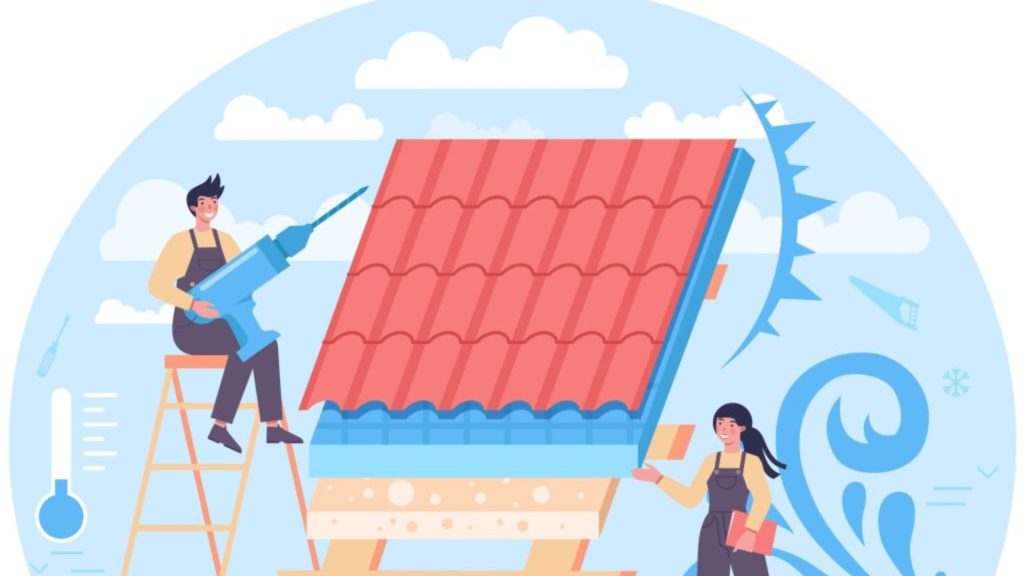
Insulation & Resistance: In cold climates, prioritize roofing materials that offer superior insulation and resistance to snow and ice buildup. Metal roofing, asphalt shingles with proper underlayment, or synthetic slate are ideal for protecting your home from harsh winter conditions.
Best Roof for Tropical Climate:
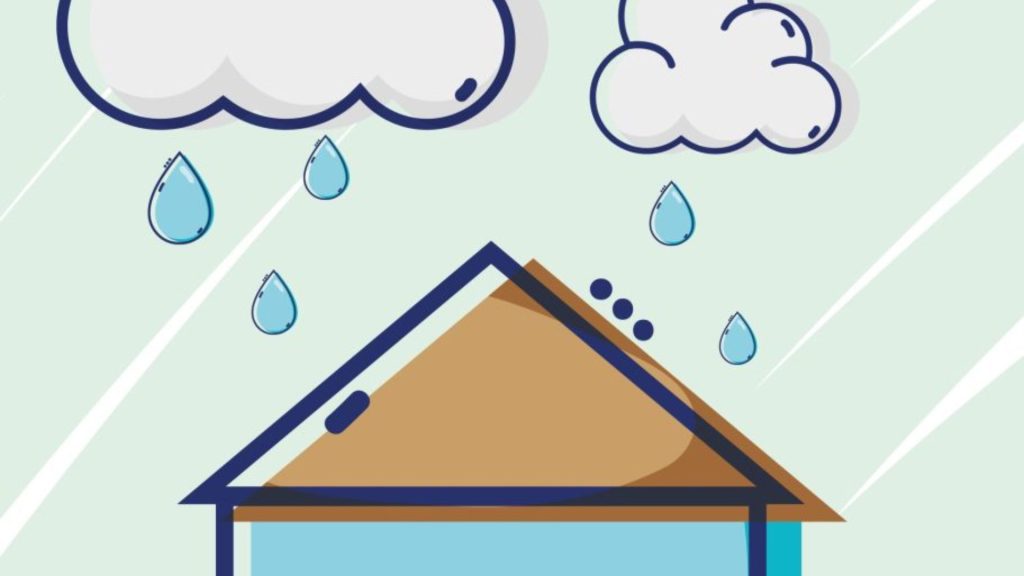
Moisture Resistance & Durability: Metal roofing, concrete tiles, or synthetic slate are ideal for tropical climates due to their resilience to high humidity and heavy rainfall. These materials offer durability and protection against the unique challenges of tropical weather conditions.
All-Climate Roofing:
- Versatility & Durability: Consider options like metal roofing and architectural shingles that perform well across various climates, offering versatility and durability to withstand diverse weather conditions.
- Investment Value: Investing in all-climate roofing solutions can provide long-term benefits and performance, offering peace of mind and protection against the elements for years to come.
Introducing Best Enterprises General Contracting
In East Northport, Best Enterprises General Contracting is a premier provider of expert roof installation services. Specializing in shingle roof installations, Best Enterprises GC offers diverse styles and colors to enhance your home’s curb appeal. With a dedication to blending aesthetics and functionality, our experts craft roofing solutions tailored to your needs. Beyond installation, Best Enterprises GC provides comprehensive services, incorporating top-tier materials, underlayment, ice and water shields, ridge vents, and premium accessories to ensure longevity and durability.
As affordable roofers, Best Enterprises GC makes high-quality installations accessible to homeowners. Our commitment to quality is underscored by a 50-year material warranty and a 10-year labor warranty, offering peace of mind and protection against unexpected expenses or repairs.
Conclusion
Investing in the right roofing material is a strategic decision encompassing aesthetics and functionality. By understanding your specific regional climate and consulting with roofing contractors like Best Enterprises GC, you can select a roof that enhances your home’s beauty and provides enduring protection against the elements. With careful consideration and expert guidance, you’ll ensure the longevity and resilience of your investment, securing peace of mind for years to come.
- Published in Blog, Remodeling, Roofing
Roofing Trends to Watch in 2024: Sustainability, Style & Innovation
As we enter 2024, the world is witnessing a dynamic shift, with innovative styles, sustainable solutions, and modern aesthetics taking center stage. Homeowners look for roofing solutions that protect their residences and add to their home’s visual appeal. This blog will explore the top roofing trends in 2024, focusing on roofing styles, sustainability, and modern practices. Additionally, we look closer at how Best Enterprises General Contracting is at the forefront of adopting these trends and implementing best practices for residential roofing.
Roofing Styles
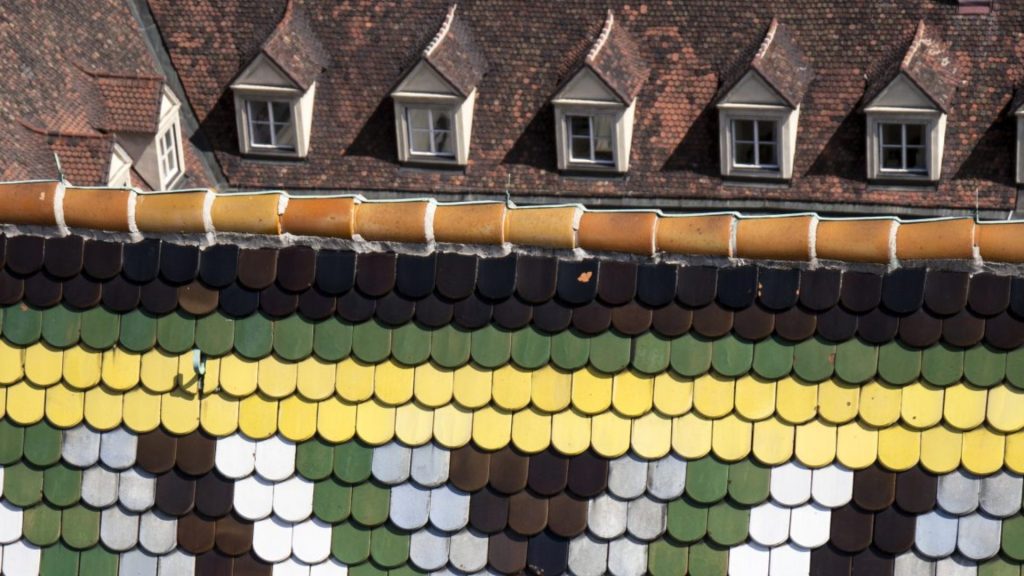
Roofing styles are evolving to meet the diverse preferences of homeowners. Traditional styles give way to more contemporary and minimalist designs that blend with modern architecture. Flat and low-slope roofs are gaining popularity for their sleek appearance and compatibility with modern home designs. These styles provide a clean aesthetic and offer additional functional benefits, such as easier maintenance and the potential for rooftop gardens or solar installations.
Best Enterprises General Contracting recognizes the importance of staying ahead in roofing styles. We incorporate these modern designs in our projects, ensuring homeowners receive roofing solutions that meet their functional needs and elevate the overall look of their homes.
Sustainable Roofing

A key focal point in roofing trends for 2024 revolves around prioritizing sustainability. With a growing awareness of environmental issues, homeowners are increasingly seeking roofing materials and practices that minimize their ecological footprint. Sustainable roofing options include materials with high recyclability, energy-efficient roofing systems, and the integration of green technologies.
Best Enterprises General Contracting is leading the way in sustainable roofing practices. We have adopted eco-friendly roofing materials, such as recycled metal and solar reflective shingles, to reduce the environmental impact of their projects. Additionally, we are incorporating green roofing solutions, like living roofs with vegetation, not only for their environmental benefits but also for their ability to improve insulation and energy efficiency.
Residential Roofing
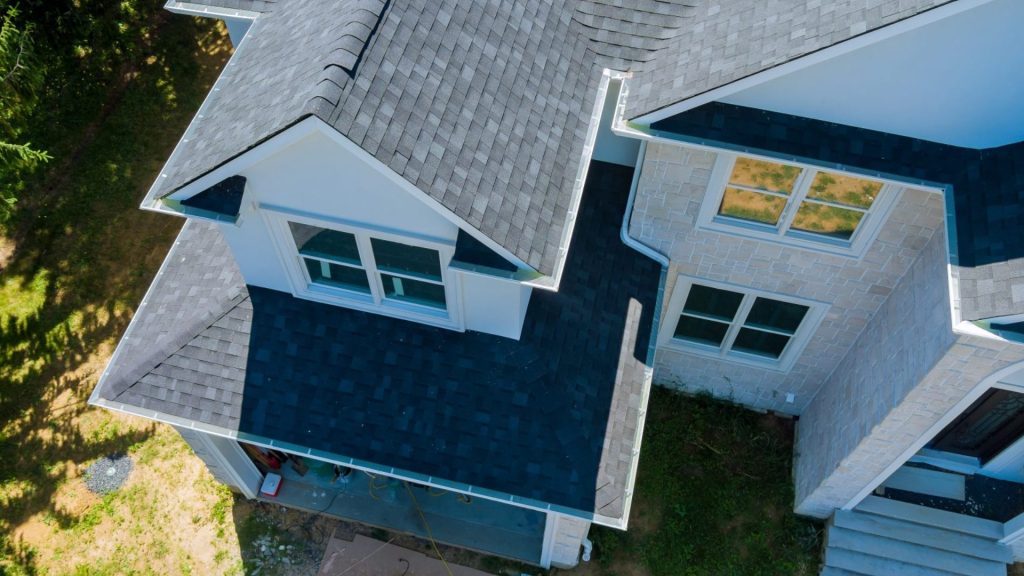
Residential Roofing Trends 2024 focuses on creating comfortable, energy-efficient, and aesthetically pleasing living spaces. Homeowners are investing in roofing materials that offer durability and weather resistance while enhancing the curb appeal of their homes. Roofing materials with enhanced insulation properties are gaining popularity, contributing to energy savings and increased home comfort.
Best Enterprises General Contracting understands the unique needs of residential roofing. We pride ourselves on providing homeowners with roofing solutions prioritizing durability, energy efficiency, and visual appeal. Whether it’s traditional asphalt shingles, metal roofing, or innovative sustainable options, Best Enterprises General Contracting tailors to the specific requirements of each residential project.
Modern Roofing
Modern roofing trends in 2024 go beyond aesthetics to incorporate advanced technologies and smart solutions. Homeowners are increasingly interested in roofing systems integrating with smart home technology, allowing for automated climate control, energy monitoring, and self-repairing capabilities. Modern roofing also encompasses cutting-edge materials that offer superior durability and longevity.
Best Enterprises General Contracting is at the forefront of modern roofing practices. We embrace the use of advanced materials and cutting-edge technologies to enhance the performance and longevity of our roofing projects. From incorporating solar panels and smart roofing systems to utilizing innovative materials with high resistance to weathering, Best Enterprises General Contracting is dedicated to providing roofing solutions that meet the demands of the modern homeowner.
Best Practices by Best Enterprises General Contracting:
In addition to following the latest trends, Best Enterprises General Contracting sets itself apart by adhering to the best practices in the roofing industry. The company places a strong emphasis on:
1. Quality Materials:
Best Enterprises General Contracting prefers premium roofing materials to guarantee their undertakings’ lasting strength and durability. This commitment to quality enhances the roofing system’s longevity and reduces the need for frequent repairs and replacements.
2. Skilled Craftsmanship:
The Best Enterprises General Contracting team comprises skilled and experienced artisans who are well-versed in the latest roofing techniques. We invest in continuous upgrades and training to ensure our workforce stays updated with industry standards and best practices.
3. Customer Satisfaction:
Best Enterprises General Contracting places customer satisfaction at the core of its operations. We collaborate closely with homeowners to understand our unique needs and preferences, tailoring roofing solutions that meet and exceed expectations.
4. Safety Measures:
Safety is a top priority for Best Enterprises General Contracting. We follow stringent safety protocols to protect both our workforce and the homeowners. This commitment to safety not only ensures a smooth project execution but also contributes to a positive overall experience for the clients.
Conclusion
In 2024, roofing trends are embracing a perfect blend of style, sustainability, and modern technology. Homeowners are no longer just seeking protection for their homes but also demanding roofing solutions that enhance their properties’ visual appeal, energy efficiency, and longevity. Best Enterprises General Contracting stands out in the industry by adopting these trends and adhering to the best practices, ensuring the highest quality in residential roofing projects. As we move further into the future, the collaboration between innovative trends and best practices will continue redefining the residential roofing landscape.
The Benefits of Using a Licensed and Insured Roofing Contractor
The roof is essential to a building’s structure, protecting the property from harsh weather conditions and keeping occupants safe and dry. To achieve this, hire a professional local roofing contractors. No two roofing contractors are the same; choosing a licensed and insured contractor is essential.
Benefits of Hiring a Licensed Roofing Contractor
A licensed roofing contractor has to comply with the minimum qualifications prescribed by the state or local authorities to operate legally. Here are the benefits of hiring a licensed roofing contractor:
- Assurance of Quality Work and Compliance with Local Building Codes and Regulations: A licensed roofing contractor has passed examinations and undergone extensive Training on installing, repairing, and maintaining roofing systems.
- Qualification and Training Required for a Licensed Roofing Contractor: A licensed roofing contractor has met the minimum qualifications and standards required by the state or local authorities. They have undergone Training and passed examinations on roofing systems’ installation, repair, and maintenance, making them more knowledgeable and qualified than unlicensed contractors.
- Warranty or Guarantee for their Work: Licensed roofing contractors offer warranties or guarantees. If there are any issues with your roof, they will return and fix it without additional charges.
Benefits of Hiring an Insured Roofing Contractor
An insured roofing contractor has insurance coverage to protect against accidents, injuries, and property damage. Here are the benefits of hiring an insured roofing contractor:
- Protection against Liability for Accidents or Injuries: Accidents can happen during roofing projects, and the last thing you want is to be liable for any injuries or accidents. Hiring an insured roofing contractor ensures that their insurance policy covers any injuries or accidents during the project.
- Protection against Property Damage: Roofing projects can be messy, and property damage is always risky. Hiring an insured roofing contractor guarantees that their insurance policy covers any property damage that occurs during the project.
- Compliance with OSHA Regulations for Safety: The Occupational Safety and Health Administration (OSHA) requires roofing contractors to comply with safety regulations to protect workers from hazards and prevent accidents. An insured roofing contractor is more likely to comply with OSHA regulations, ensuring the safety of the workers and the occupants of the building.
Hiring a Licensed and Insured Roofing Contractor Provides Several Benefits to Homeowners, Including:
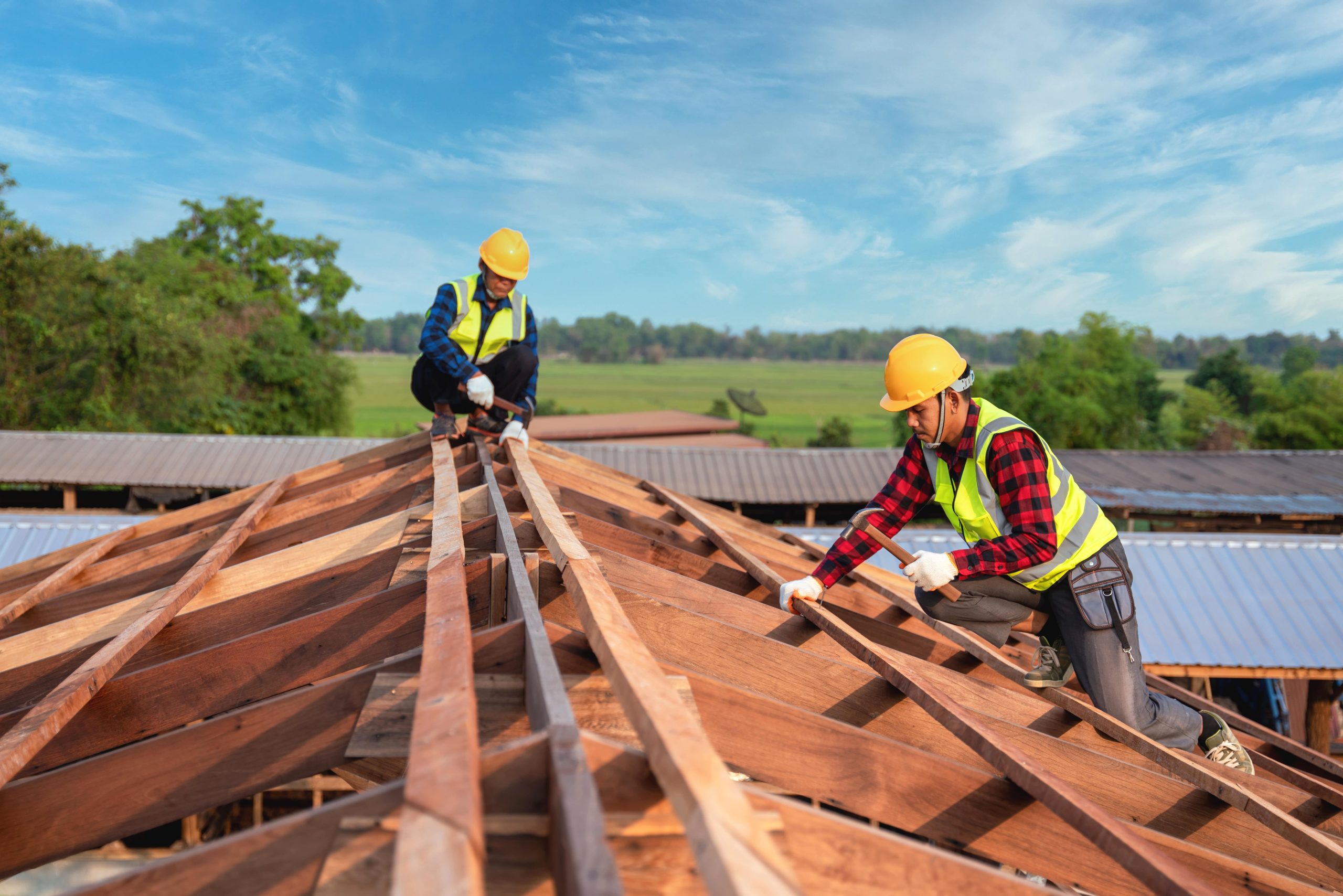
- Access to Professional Services up to Industry Standards: A licensed and insured roofing contractor has the knowledge and experience to provide professional roofing services that meet industry standards. They have access to the latest roofing techniques and materials, ensuring that your roof is installed, repaired, or maintained efficiently and effectively.
- Protection against Financial Losses and Liability: A licensed and insured roofing contractor protects homeowners from financial losses and liability. In case of property damage, accidents, or injuries, their insurance policy covers any losses, ensuring that homeowners are not held liable.
How to Choose a Licensed and Insured Roofing Contractor:
Finding a licensed and insured roofing contractor can be a daunting task. The following information will help you pick the finest roofing contractor for your requirements:
Search for Local Roofing Contractors:
Look for local roofing contractors in your area. Local roofing contractors are more familiar with your area’s climate, building codes, and regulations, making it easier for them to provide efficient and effective roofing services.
Verify the Roofing Contractor’s Licensing and Insurance:
Ensure that the roofing contractor you intend to hire is licensed and insured. You can do this by asking for their license and insurance certificates and verifying them with the relevant authorities.
Look for Experience and Expertise:
Hire a roofing contractor with extensive experience and expertise in the roofing industry. A contractor will likely offer top-notch roofing services if they have a track record of completing successful roofing jobs.
Check for References and Reviews:
Ask the roofing contractor for references and read reviews from previous clients. This gives you an idea of their reputation and the quality of their work.
Get Multiple Quotes:
Get multiple quotes from roofing contractors and compare prices and services. This helps you find the best roofing contractor that fits your budget and meets your roofing needs.
Warranty or Guarantee:
Licensed and insured roofing contractors typically offer warranties or guarantees for their work. If any issues arise with your roof after the work is completed, the contractor will return to fix the problem at no additional cost. Homeowners benefit from the peace of mind of knowing their investment is secure.
Adherence to Building Codes and Regulations:
Engaging a licensed roofing contractor guarantees adherence to building codes and regulations in the work carried out on your roof. This ensures that installations, repairs, or maintenance are executed safely and accurately, thereby averting potential costly fines or legal complications.
Protection against Liability:
Licensed and insured roofing contractors have liability insurance that protects homeowners from accidents or injuries on the job site. If injured while on your property, you will not be held accountable for a worker’s medical costs or missed income. It is very important to consider that if you hire an unlicensed or uninsured roofing contractor, you may be liable for any accidents or injuries on your property.
Protection against Property Damage:
Roofing projects can be messy and may result in property damage. Hiring a licensed and insured roofing contractor ensures that the contractor’s insurance will cover any property damage during the project.
Maintenance and Repairs:
Additionally, roofing contractors who are licensed and insured are equipped to offer maintenance and repair services for your roof. Consistent upkeep and timely repairs can prolong the lifespan of your roof, mitigate expensive damages, and optimize its performance. Engaging a licensed and insured roofing contractor guarantees proper maintenance and accurate execution of any necessary repairs.
Conclusion
When homeowners hire a licensed and insured roofing contractor, they enjoy numerous advantages, such as receiving high-quality work, compliance with building codes and regulations, assurance of warranty or guarantee for the work undertaken, protection against liability for accidents or injuries, and safeguarding against property damage. To secure the most suitable roofing contractor for your requirements, it’s advisable to search for local professionals, verify their licensing and insurance, assess their experience and proficiency, review references and feedback, and obtain multiple quotes.
The Importance of Proper Roof Maintenance
Proper roof maintenance is key to ensuring that a building remains structurally sound and provides safe shelter for its occupants. It involves more than just fixing leaks or replacing broken shingles. With regular upkeep, you can prevent problems before they begin—saving time, money, and unnecessary stress.
What Professional Roof Maintenance Includes:
- Inspecting the roof
- Removing debris
- Repairing broken shingles or tiles
- Addressing any existing issues
These steps are vital to extending your roof’s lifespan and avoiding expensive repairs down the road.
Always watch for signs of damage and contact a professional roofing service promptly. This not only protects your building’s structure but also keeps everyone inside safe.

Key Benefits of Regular Roof Maintenance
1. Extends Roof Lifespan
A well-maintained roof can last for decades. On the other hand, neglect speeds up wear and tear. Regular inspections help catch small issues early, preventing them from turning into costly repairs.
Tip: Have your roof inspected by a professional at least twice a year.
2. Early Damage Detection
Roof damage is often invisible until it becomes severe. Regular maintenance helps identify problems like cracked tiles, loose flashing, or water infiltration before they escalate. This can save you from receiving a hefty repair bill later.
3. Leak Prevention
Leaks are one of the most common roofing problems. They’re usually caused by missing shingles, damaged flashing, or clogged gutters. If unnoticed, they can lead to water damage, mold growth, and structural weakening. Routine checks can help prevent leaks before they happen.
4. Improves Energy Efficiency
A solid, insulated roof helps maintain a consistent indoor temperature. Combined with proper ventilation, it reduces heating and cooling costs by preventing air leaks. In return, you enjoy a more comfortable living space and lower energy bills.
5. Prevents Health Hazards
Leaky roofs can create a perfect environment for mold and mildew. Mold spores easily spread through HVAC systems, putting your family’s health at risk. Prolonged exposure can trigger allergies, respiratory issues, and skin irritations.
6. Enhances Safety
Damaged roofs can pose serious safety risks, including falling shingles or slips caused by algae and moss. Regular maintenance ensures that your roof’s structure remains intact, reducing the chances of accidents or collapses.
7. Insurance Compliance
Many insurance companies require routine roof maintenance as part of their coverage policy. Failing to maintain your roof may void your claim during damage. It’s wise to check your policy and schedule maintenance to stay protected.
8. Boosts Curb Appeal
A clean, well-maintained roof greatly improves your home’s appearance. Missing shingles or stained tiles can ruin your property’s first impression. Keeping your roof in top shape enhances your home’s aesthetics and value.
9. Protects Property Value
Roof issues like rotting wood or mold growth can cause serious damage over time. Buyers are unlikely to invest in a home with roofing problems. Regular upkeep preserves your home’s condition and makes it more appealing to potential buyers.
10. Saves You Money
While maintenance may seem like an expense, it saves you money in the long run. Small repairs cost far less than major damage or a full roof replacement. For example, ignoring minor winter issues like ice dams can eventually lead to water damage inside your home.
Regular Roof Maintenance Tasks
A professional roofer completes these roof maintenance tasks to check for damage and assess your roof’s condition and performance:
- Examine the roof for stains, peeling, or missing shingles
- Inspect pipe boots for cracks or damage
- Check for evidence of pests or animals
- Remove debris from the roof and gutters
- Make sure roof ventilation is working properly
- Inspect flashing and caulking for potential leaks
- Sweep and inspect the chimney
Regular roof maintenance makes the difference between an expensive, leaking eyesore and a protective, attractive barrier on your home. Completing the necessary tasks every year will ensure your roof lasts a long time and continues to perform optimally.
Conclusion
Proper roof maintenance is essential to ensuring the structural integrity and longevity of a building’s roof. It helps stop leaks, makes your roof last longer, and cuts energy costs, improve the aesthetics of the building, keep the roof safe, meet insurance requirements, and help the building maintain its value. By investing in regular roof maintenance services, building owners can save money in the long run and ensure that their building is well-protected. When selecting a roof maintenance service provider, choose a professional and experienced contractor with a good reputation in the market. A good roofing contractor will ensure that your roof is in good condition and that you can rest easy knowing that your building is well-protected.
Get a free estimate with Best Enterprise GC or schedule a site visit for proper maintenance of your home or building roofs.
How to Find Reliable Roofers near you
How to Find Reliable Roofers near you
Keywords: Reliable Roofers, roofing contractors near you, What Is a Roofing Contractor?, Independent Roofing Contractor, Roofing Contractor Network.
One of the most difficult questions that need to be asked when repairs or replacing a roof needs to be done is, “How do I find a reliable roofing contractor near me?”
Replacing your home’s roof is a relatively big expense and cannot be done repeatedly. Hence, employing the services of a professional and affordable roofing contractor is nothing short of a treasure hunt.
This blog post will provide tips and tricks to find the best and most reliable roofing contractor in your locality.
Take Suggestions from friends and family. Ask for recommendations:
Word of mouth is the best kind of advertising. There’s a good possibility someone has had work done on their roof and can recommend a dependable source, so ask friends, family members, and neighbors if they have any recommendations of local roofers in your region.
Study client testimonials
The internet can be a helpful resource for discovering dependable and reputed roofers if you are short on suggestions. Before selecting a contractor, it’s crucial to study client ratings and endorsements. All respectable roofers would be delighted to share references from past clients and samples of their prior work with you. Do not hesitate to contact references if you have any inquiries regarding their prior work.
Pay attention to ratings and reviews:
The internet can be a helpful resource for discovering dependable and reputed roofers if you are short on suggestions. Before selecting a contractor, it’s crucial to study client ratings and endorsements. All respectable roofers will be delighted to share testimonials, recommendations from former clients, and examples of their prior work. Do not hesitate to contact references if you have any inquiries regarding their prior work.
It’s usually wise to stay away and do business elsewhere if you see negative reviews or a lack of examples of previous work. Since roofing requires talent, it’s crucial to go over and above to ensure the contractor you select is knowledgeable, dependable, and trustworthy.
Verify credentials and certifications:
It’s usually a good idea to check a roofing contractor’s credentials and accreditations before hiring them. Find out if your roofer is a part of The National Federation of Roofing Contractors (NFRC), a reputable trade organization for roofers.
The NFRC guarantees that all members provide high craftsmanship and ethical business conduct through a strict code of conduct. Contractors are subject to inspections every three years to ensure they uphold their standard of work. Additionally, they must comply with health and safety laws, carry the proper public, employers, and third-party insurance, and conduct their business in line with the NFRC Code of Practice.
Additionally, search for roofers who possess a certificate from the British Board of Agreement and are BBA certified. A roofer is more dependable and trustworthy if they have more credentials and awards.
Verify insurance and licenses:
Your roofer needs to be properly licensed and insured. The contractor’s insurance should cover all employees and subcontractors. To verify their insurance, request a copy of their insurance certificate. Professional roofers must possess the necessary licenses and insurance if they wish to work lawfully. Make sure a roofer has sufficient licensure and insurance before hiring them. Insufficient insurance could result in a lawsuit between a contractor and homeowner if a roofing employee is hurt or has an accident on the property.
Select a reputable roofing firm:
While it’s nice to encourage new businesses, looking for a contractor with a lot of experience in roof repairs and replacements is a good idea. Hiring a novice increases the likelihood that the work won’t be done to the greatest standard or that mistakes will be made. It’s usually preferable to select a reputable roofer with a lot of experience because this can result in pricey repairs and replacements. Generally speaking, a roofer’s job craftsmanship improves with experience.
Find local roofers:
Always choose a local roofer while choosing the best one for the task. Local roofers are always close by and more likely to be available when you nIs your roof damaged? Does your roof need replacing or repairing? Find how you can get reliable roofers near you with Best Enterprises GC in NY. Read to know more.eed them, which can be crucial if you ever need an emergency repair. Additionally, since local roofers are familiar with the different types of houses and roofs in your neighborhood, they can give you specialized advice and direction on roof repairs and replacements.
Take multiple quotes:
We advise requesting quotations from at least three different roofers. By comparing costs, you can ensure you’re receiving the greatest bargain. Remember that receiving the lowest quote does not always equate to receiving the best deal. A very low quote can signify that the roofer is utilizing low-quality materials and cutting corners. Avoid taking the cheapest deal; a few dollars more could mean the difference between quality service and a subpar one.
Your chosen contractors should be able to provide you with a price once they have examined your roof and the work that needs to be done. Make sure you request a thorough estimate with a complete explanation of all expenses, including labor, shipping, and materials. Ask your contractor to explain anything on the quote you don’t understand by getting in touch with them. Roofers who are respectable and reliable will be ready to discuss prices with you.
Never be scared to seek clarification:
Last but not least, don’t be hesitant to ask questions of your roofing contractor. A reliable roofer will be pleased to address any of your queries and worries and clarify anything you are unsure of. Ascertain your contractor’s reliability by asking the following questions:
- How long have you worked in this field?
- What kinds of tasks have you completed?
- Do you have any past work samples?
- What are the warranty’s specifics?
- Are you completely insured and licensed?
- What credentials do you possess?
- Do you use subcontractors for roofing?
- Will you swap out the outdated roof?
- Can you give me a price estimate?
Best Enterprises:
The roofers in your area.
You need not search beyond Best Enterprises if you require trustworthy roofing contractors. Our knowledgeable and talented roofers offer an unrivaled selection of specialized roofing services at incredibly low prices because of their extensive business experience. Whether you need repair work done on your home or your roof needs to be rendered, we prioritize client happiness and go above and beyond to provide the best service possible.
At Best Enterprises, we provide expert and durable roofing solutions for brand-new flat roofs and cater to household and business clients. We are the team to contact if you require simple roofing solutions or an urgent repair.
Visit our website today to learn more about our roofing services.
How to Find the Best Roofer in Huntington
The time has come where your home is due for a roof replacement and next comes the difficult task of finding a roofer in Huntington. As a homeowner you may be confused as to where to begin. There are several ways to find any type of service you could possibly need, whether it be a roofer in Huntington or a paver in Long Island.
There are traditional ways as well as modern ways to find exactly what you are looking for. Keep in mind that once you have narrowed down your search to a few reputable roofers you should do some additional research to ensure they are the right fit for you.
To Find the Best Roofer Conduct an Online Search
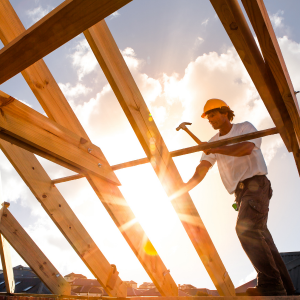 The world has moved online especially over the last year. You can pay bills online, connect with friends and family, and even hire services.
The world has moved online especially over the last year. You can pay bills online, connect with friends and family, and even hire services.
Conducting an online search can reveal a plethora of options for you to choose from. Many businesses will have websites you can visit that will tell you all about their products and services. You can even fill out contact forms and chat with a representative.
Other businesses will have a Google listing or something similar. This provides you with general contact information like the location, phone number and business hours. You will be able to contact them directly using this information.
Word of Mouth is Must to Find the Best Roofer
A tried and true method of finding a service has always been through word of mouth. Finding a roofer in Huntington is no different. With so many homeowners in the area, it is likely that one of your neighbors has relied on roof services before.
Your neighbors and friends will give you an honest opinion about their experience. Moreover, if you ask them, you might be able to see the work for yourself in their home.
Locate the Best Roofer Using the Yellow Pages
Although the look of the yellow pages have changed it still provides information on local pages. The yellow pages have moved online as the popularity of the internet has grown. There is also a mobile app to find local businesses such as a roofer in Huntington.
Use Social Media to Locate the Best Roofer
Over the past few years social media has risen in popularity exponentially. It began as a way to stay in touch with family and friends. It has now evolved into a way for businesses to promote themselves and gain clientele. Some platforms have a feature where you can ask your friends for suggestions such as a roofer in Huntington.
Social media pages allow for customers to leave reviews and comments directly on the business page.
Things to Keep in Mind While Finding for the Best Roofer
Once you have found a Huntington roofer, there are a few things to keep in mind. Ensure the roofer is licensed and insured. Get a free initial quote from several companies before making a decision. Look at reviews from previous customers and factor that into your decision as well.
Call Best Enterprises General Contracting Today
If you are looking to replace your roof, it is important to find the best Huntington roofer. Contact Best Enterprises General Contracting at 631-651-9524 for a free initial consultation. We offer a wide range of home improvement service
- Published in Roofing
Best Enterprises is a Preferred Contractor for Owens Corning!
LI Preferred Contractor | Long Island Owens Corning
At Best Enterprises General Contracting, we take pride in being a trusted roofing contractor in Suffolk County. One key reason homeowners choose us is our relationship with Owens Corning, America’s leading shingle brand. As an Owens Corning Preferred Contractor, we combine top-quality products with expert craftsmanship giving you the best roofing solution available.

Why Owens Corning Matters
Owens Corning has been a leader in building materials since 1938. Known for their iconic PINK insulation, the company also pioneered fiberglass technology that transformed the roofing industry. In 1965, they patented the first fiberglass shingle, a major innovation that changed how roofs are built and maintained.
Today, fiberglass-asphalt shingles are the industry standard for durability, weather resistance, and long-term performance.
Built on Innovation and Trust
Owens Corning stands out for its commitment to:
- Cutting-edge technology
- Long-lasting, impact-resistant products
- Superior energy efficiency
- Sustainable materials
- Strong warranties
Their shingles undergo extensive testing to meet or exceed industry standards. That means peace of mind for homeowners like you, knowing your roof is built to last.
You’ll also benefit from an outstanding 50-year material warranty and a 10-year labor warranty, so your investment is well protected.
Why We Partner with Owens Corning
At Best Enterprises, we want every customer to feel confident in their roofing project. That’s why we work with Owens Corning, a brand that shares our commitment to quality and reliability. When you choose us, you’re getting:
- A licensed and insured local team
- Premium shingles backed by real performance data
- A beautiful roof that stands the test of time
We believe in delivering more than just a new roof we deliver trust, protection, and value.
Choose the Best Roofing Contractor on Long Island
If you’re looking for a contractor who offers the best in both product and service, look no further than Best Enterprises General Contracting. As an Owens Corning Preferred Contractor, we deliver results that last and service you can count on.
📞 Call us today at 631-651-9524 or
🏢 Visit us at 547 Larkfield Road, East Northport, NY
Let’s get started on your roofing project today!
- 1
- 2






